
Find Your Sport

Aikido
Aikido is a Japanese martial art that is characterized by grappling, throws and locks. It emphasizes complete mental and physical control over one’s body to utilize the opponent’s momentum and strength against themselves without using offensive techniques. Aikido is said to have originated in Japan during the 14th century before being standardized in the early 20th century.
No special skills are required to get started with aikido. There is much more emphasis on flexibility rather than strength. The first thing new students of aikido learn is how to fall safely to avoid injury during practice.
With its emphasis on less aggressive techniques, aikido is easily adaptable for older individuals. Please contact your school of choice to see if they can provide any accommodation for you.
-
Increased flexibility.
Increased focus.
Increased self-confidence.
-
No special equipment is needed for aikido. Certain schools may require that you purchase an aikido uniform for classes. Please contact your school of choice to ask if they require these uniforms.
-
The most common injuries in aikido include bruises, soreness of the body, and sprains. Remember to thoroughly stretch and warm up before practicing. Ensure that when grappling with other participants, that you are executing techniques to the best of your ability to avoid injury to yourself and others.
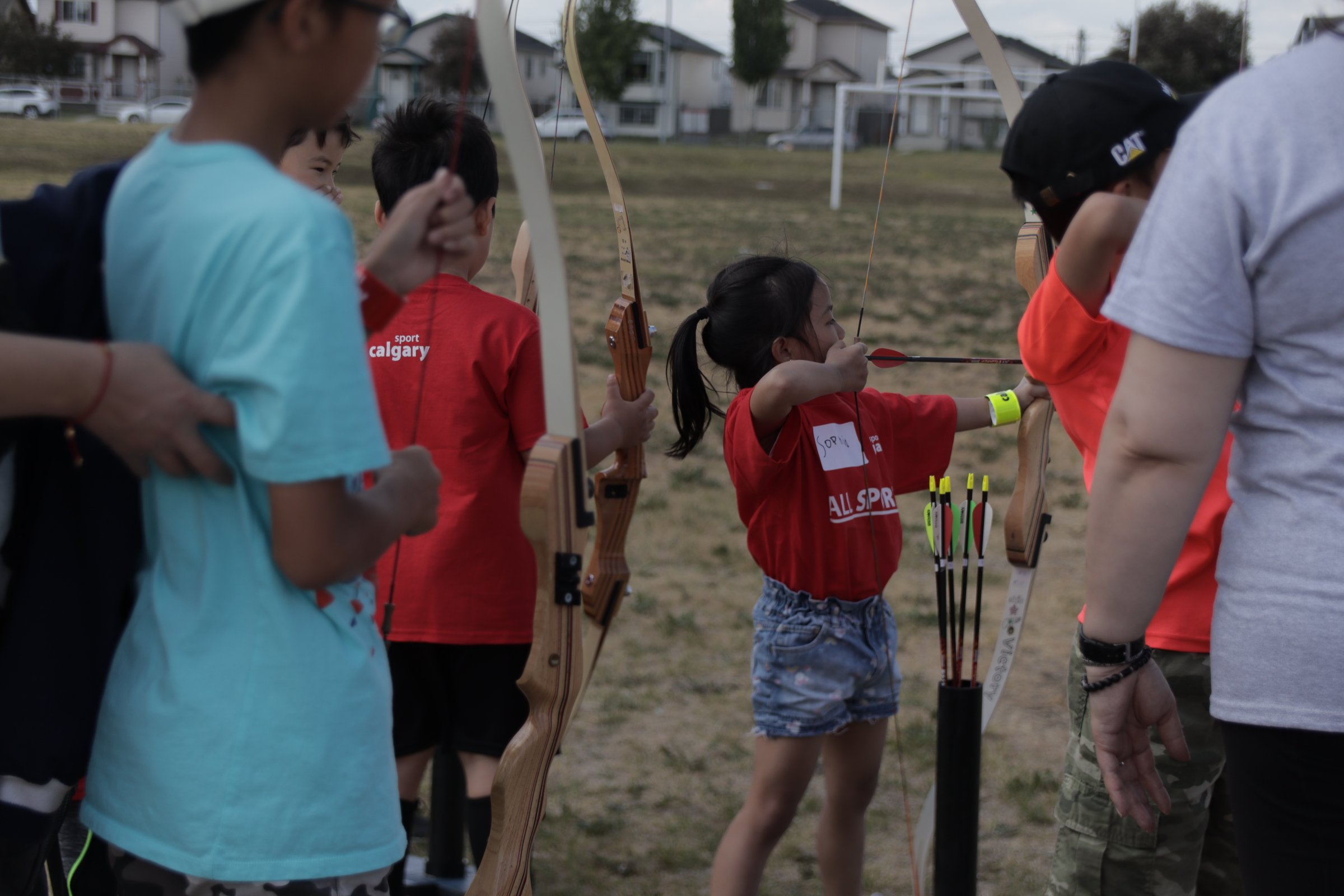
Archery
Archery is a precision sport that requires participants to use a bow and arrow to shoot at a target that can be up to 90 metres away. Scores are calculated by where a player’s arrow ends up on the target, with each coloured ring determining how many points they earn.
The first evidence of the bow and arrow was found in Germany dated back to 17,500 to 18,000 years ago. It wasn’t until the late 18th century in London when archery became a popular pastime among the European aristocracy.
There are no prior skills that you need to know before getting started. Archery is a sport that requires precision, repetition, and focus. Don’t be discouraged if you can’t get a shot onto the target the first time, this is a sport that requires lots of practice!
Adaptive versions of archery allow for participants with physical and/or cognitive disabilities to play or compete. Players may sit, use a seer, or stands to help with aiming at the target. Modifications to equipment such as lighter bows and arrows, mechanical releases and mouth tabs can also be used. Apart from your bow and arrow, archers should have a quiver to hold the arrows, an arm guard and tabs which are worn on the arms and fingers respectively for protection from the bowstring.
-
Increased strength in shoulders, arms, core and chest
Increased focus and concentration.
Improves hand-eye coordination.
-
Apart from your bow and arrow, archers should have a quiver to hold the arrows, an arm guard and tabs which are worn on the arms and fingers respectively for protection from the bowstring.
-
Archers must be cautious on the range and ensure that everyone else has finished their rounds before getting their arrows. Remember to wear protective gear and be sure to stretch and warm up your upper body and arms before starting as you could injure your shoulders, elbow, wrist and back.
Similar Sports: Axe Throwing
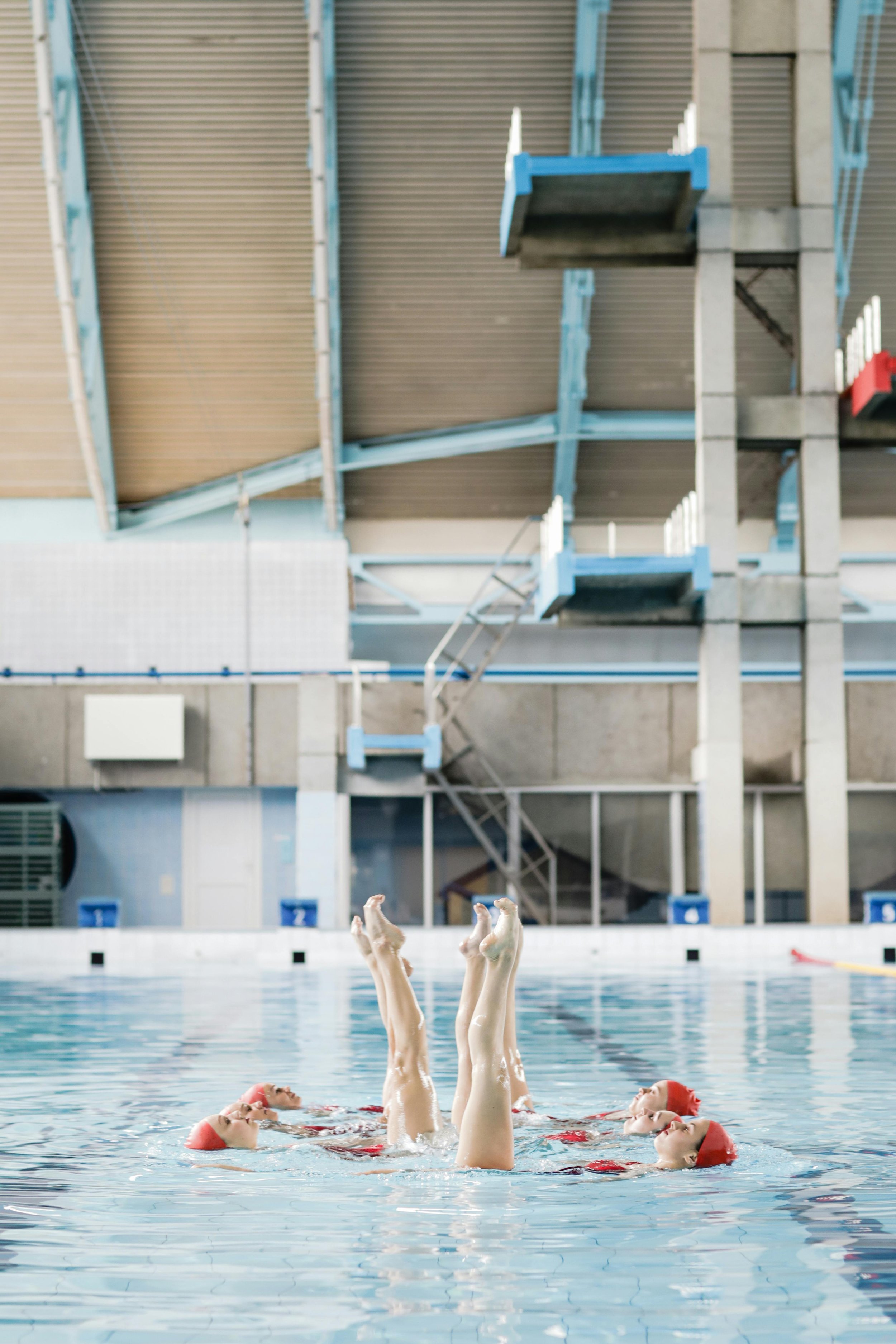
Artistic Swimming
Artistic swimming AKA synchronized swimming, is a water sport where swimmers perform a choreographed routine in a swimming pool accompanied by music. The first known artistic swimming competition was in 1891 in Berlin, Germany, and became a popular part of theatre shows throughout Europe. The sport eventually became a part of the 1984 Olympic Games in L.A.
Individuals who are interested in starting artistic swimming should know how to swim and be comfortable in the water while holding their breath. Clubs may offer beginner swimming classes for those who are starting their swimming journeys.
Adaptive versions of artistic swimming allow participants with physical and/or cognitive disabilities to get involved in the sport. Modifications to techniques, equipment and class sizes can help create a more welcoming and comfortable environment. Please contact your artistic swimming sports provider to see if they have accommodation for participants with physical and/or cognitive disabilities.
Similar Sports: Gymnastics, Cheerleading, Figure Skating
-
Increased flexibility, stamina, and endurance.
Increased aerobic capacity.
Learn teamwork skills.
-
No specialized equipment is required. You’ll need a one-piece swimsuit, or Speedo, a swim cap, and nose plugs.
-
Injuries to the shoulders, back, knees and hips are common in artistic swimming. Collisions are also very common as swimmers are constantly maneuvering around the pool to get into formation. Make sure to stretch and warm up before getting into the pool and be aware of where your teammates are when practicing and competing.

Aussie Rules Football
Aussie Rules Football, or Australian Rules Football, is a contact sport played between two teams on a large oval field. The goal of the game is to kick the oval-shaped ball between 4 central posts to score points. Compared to American Football, Aussie Rules Football has more players per team (18 players on the field, with a few more on the sidelines). Passing, kicking and holding the ball for short intervals are the only ways for teams to move the ball around the field.
The first Aussie Rules Football game was played in Melbourne, Australia in 1858, with the aim of creating a game for adults, and was suited for the Australian environment. The first official Aussie Rules Football club was established in 1859, making it one of the oldest football clubs in the world.
No special skills are required for getting started with Aussie Rules Football. The sport requires near-constant full body movement, which will have players running, kicking, tackling, and catching the ball down the field. You’ll be able to build your endurance, strength and agility as you play.
Wheelchair Aussie Rules Football is an adaptable version of the game, where players with physical and/or cognitive disabilities play in wheelchairs with adjusted rules. Although a wheelchair Aussie Rules Football program has yet to be developed in Calgary, you may contact your preferred Aussie Rules Football provider to ask if they are able to provide any accommodations for you.
Similar Sports: Rugby, American Football
-
Increased stamina.
Increased endurance.
Improved hand-eye coordination.
-
To play Aussie Rules Football, you’ll need a jersey, shorts, a mouth guard, and a pair of football cleats. Most importantly, you’ll need an Aussie Rules Football, which is slightly smaller than a standard rugby ball.
-
The most common Aussie Rules Football injuries usually occur in the legs with bruises, scrapes, and strains. More serious injuries include sprains, fractures and concussions. Always remember to warm up and stretch thoroughly before playing or practicing. Be aware of your surroundings and teammates, and follow all rules while playing to avoid any serious injury.
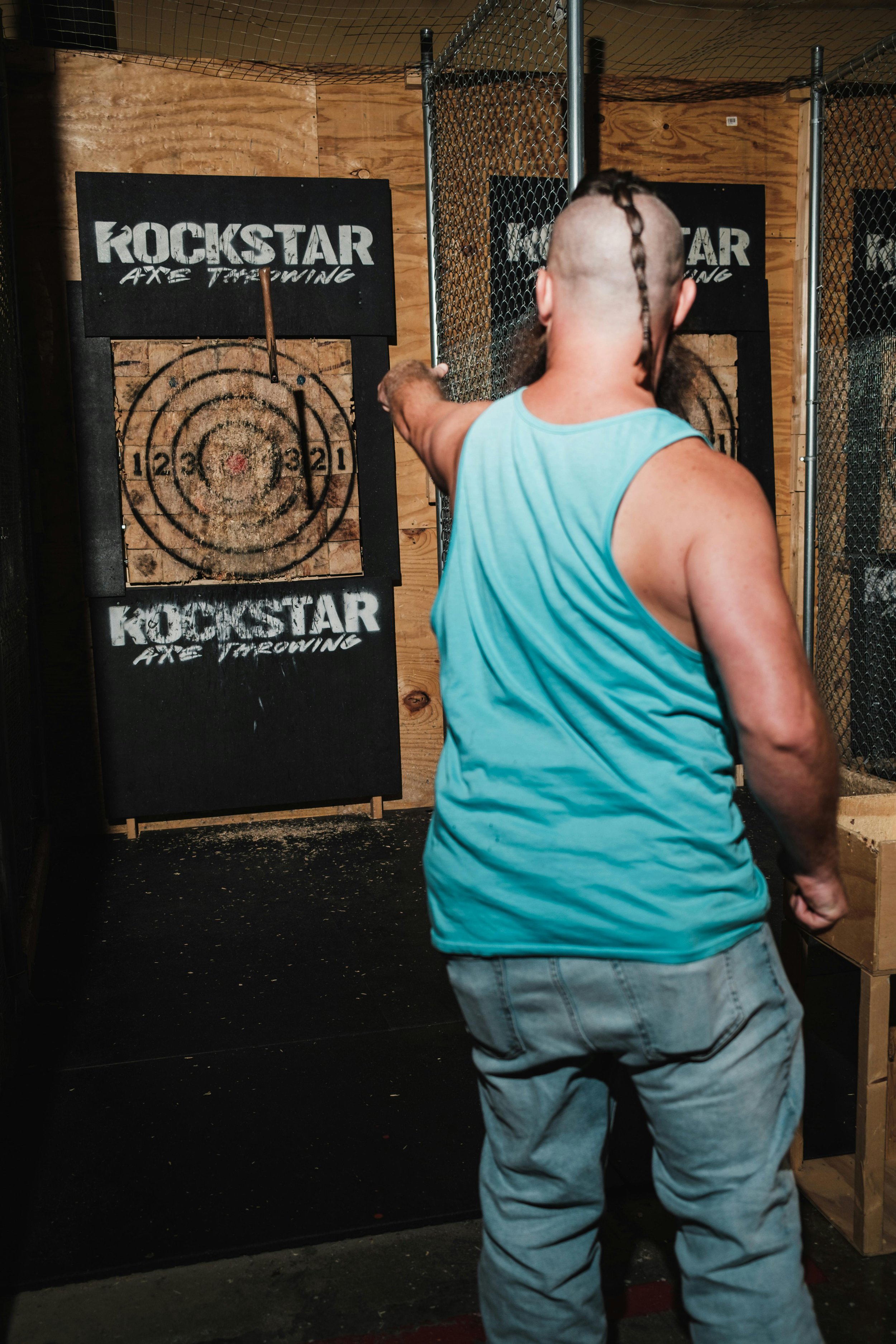
Axe Throwing
Axe throwing is a sport that involves throwing an axe at a target a certain distance away. The goal of the sport is to attempt to score as close to a bullseye as possible on the target.
Axe throwing has traditionally been a part of lumberjack competitions but has recently become more popular with the public in recent years. The sport first entered the mainstream in Europe in the early 2000’s, before it experienced a surge in popularity in North America in the 2010’s.
You don’t need any special skills for axe throwing. You’ll be making use of your arms, shoulders, core and back to be able to throw the axe at the target. It may take a bit of practice before you’ll be able to hit the target, but practice makes perfect!
Axe throwing is an adaptable sport that can be modified safely for individuals with physical and/or cognitive disabilities. Contact your local axe throwing centre to ask if they can provide any accommodation for you.
Similar Sports: Archery, Lawn Bowling
-
Increased muscle strength.
Improved focus and concentration.
A great way to relieve stress.
-
All your equipment, such as an axe and targets, will be provided at the axe throwing centre. While there are no clothing restrictions, it would be a good idea to wear something more comfortable to allow for more arm movement as well as closed-toed shoes.
-
Common injuries axe throwers experience are strains, tears and soreness in the shoulders, core and arms. It’s important to remember to stretch and warm up your arms before getting into the axe throwing lane. Make sure to follow all the safety rules and procedures that have been put into place by the throwing centre to avoid any serious injuries to yourself or others.

Badminton
Badminton is a racquet sport played in singles, or doubles on a court that is 44 feet in length (width varies) with a net in the middle. It is played with a lightweight racquet and a shuttlecock, with the goal of grounding the shuttlecock on the opposing team’s side to score points.
Variations of badminton was played in Eurasia for centuries before being developed in British occupied India in the late 1800s. Upon returning to England, the game had established rules and became increasingly popular. Badminton went on to become an Olympic sport at the 1992 games in Barcelona.
No prior skills are needed to start playing badminton. It is a very fast-paced sport that requires lots of running around the court, so practice lots, warm up and stay on your toes while you play!
Special modifications made to equipment and to the game give more opportunities for participants with physical and/or cognitive disabilities to play. Things like flexible badminton racquets, use of visual aids, and a buddy system are all examples of modifications to make the game more accessible.
-
Improved flexibility, mobility, and agility.
Improved hand-eye coordination.
Increased cardiovascular health.
-
You’ll need a badminton racquet, shuttlecock and comfortable clothes and athletic shoes to play. Most of these pieces of equipment, can be rented at various recreation centres. Make sure to check beforehand if you’ll need to bring your own equipment or if you can rent.
-
Injuries common to badminton mostly involve sprains, strains and fractures to the ankles, knees, and shoulders due to overuse. Like with any sport, it is important to remember to stretch and warm up before playing.

Ballet
Ballet is a popular type of dance that is well-known for its graceful techniques and iconic ballet dresses and pointe shoes. Ballet training involves strict attention to posture, flexibility, and strength to execute dance techniques. Although it has a reputation for being a sport only for women and girls, ballet is open for everyone regardless of ethnicity, ability, sex, and gender.
Ballet first originated in Italy during the 15th and 16th centuries before spreading to France, where it developed within the French royal court. In 1661, the very first ballet school was opened by King Louis XIV.
No special skills are required before starting to learn ballet. You will learn all basic techniques and skills during your classes.
Adaptive ballet programs allow for individuals with physical and/or cognitive disabilities to learn how to dance and develop their motor skills. Adjustments to techniques, use of equipment, such as chairs, and smaller class sizes allow for participants to have an enjoyable ballet experience. Please contact your preferred dance provider to see if they can provide any accommodation.
-
Increased flexibility.
Increased muscle strength.
Improved posture.
-
For women and girls, you’ll need a leotard, tights and a pair of ballet shoes. For men and boys, you’ll need a form fitting white t-shirt, tights and black shoes. If you have long hair, you’ll need to tie it up to keep your hair off your face.
-
The most common ballet injuries include sprains, and strains that occur mainly in the lower back, hips, and legs while more serious injuries include muscle tears and fractures. Remember to warm up and stretch thoroughly before practicing, but more importantly, know when to stop, rest, and recover to prevent serious injury.
Similar Sports: Dance, Ballroom Dancing, Country & Swing
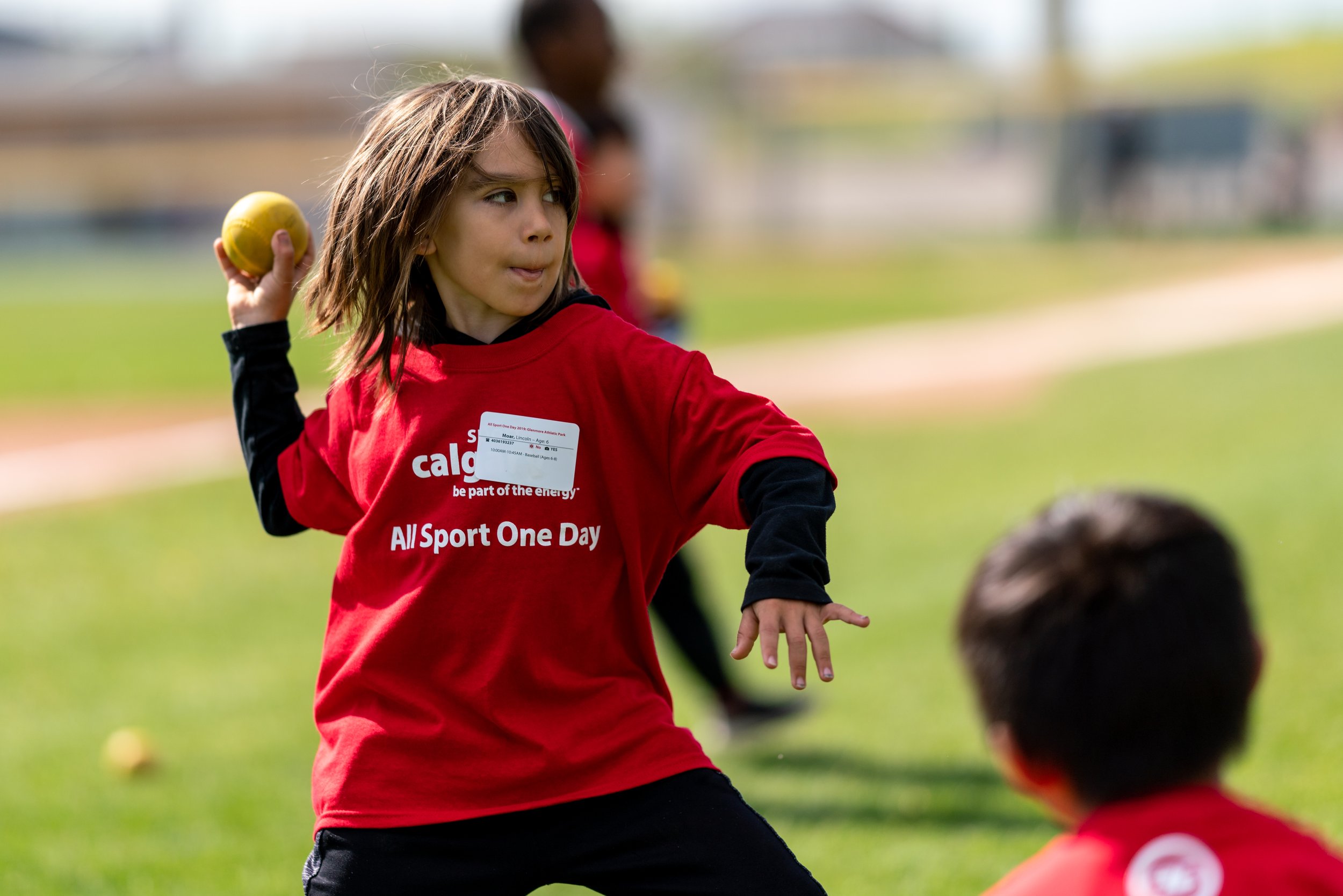
Baseball
Baseball is a popular team sport played with a ball and bat. Two teams (with 9 players each) play on a diamond, that consists of 4 bases with one team batting and the other team on the field. The game lasts for nine rounds, called innings, with the batting team aiming to bat the baseball far enough out into the field and run to touch all four bases to score points. The field team attempts to prevent runners from reaching bases by recording outs.
Although there are many theories on how baseball came to be, one popular theory is that an early version of the game was brought to Canada by English immigrants. The very first baseball game was played in Beachville, Ontario on June 4th, 1838.
Baseball is a physically demanding sport, which requires running, batting, and even sliding. You don’t need any prior knowledge to get started. You’ll learn all the rules of the game during your practice sessions, but make sure to warm up and stretch before you hit the field!
A special program called Challenger Baseball makes the sport accessible for individuals with physical and/or cognitive disabilities. Changes made to the terrain on baseball diamonds as well as modifications to equipment make it easier for everyone to play.
-
Builds teamwork skills.
Increased muscle strength.
Improves hand-eye coordination.
-
You’ll need a baseball, bat, gloves, baseball cleats, protective gear such as a helmet. You can find several baseball diamonds in several communities, however you’ll need to double check if you need to rent one before you play.
-
Baseball presents a risk of shoulder and elbow injury, as well as bruises and scrapes to the body. Be sure to stretch, warm up before you play.

Baton Twirling
Baton twirling is a gymnastic competitive sport that involves intricate dance routines and incorporate the use of batons, which is a metal, lightweight rod with rubber caps on each end. These batons are twirled, tossed and spun as a part of a routine.
The sport originated in Europe and Asia as a part of festival performances, where knives and torches were used alongside batons. The sport spread to North America shortly after the American Civil War where it was performed in military parades. In the 1960s, baton twirling evolved to become a competitive sport.
Baton twirling does require some knowledge of dance and a certain degree of flexibility in the body. Beginner and intro baton twirling classes will teach you these basic skills before you start more complicated routines.
There has yet to be the development of any adapted versions of baton twirling, however, you may call your local baton twirling lesson provider to see if they can provide any special accommodations.
-
Improved hand-eye coordination.
Improved teamwork skills.
Increased flexibility.
-
You’ll need a baton, comfortable fitting clothes and athletic shoes for practice. For competitions, you may need to purchase a uniform. Batons will be provided during lessons.
-
Common baton twirling injuries include bruises, soreness, strains, and sprains. A more serious injury can include concussions. Be aware of your surroundings and teammates as you practice and perform routines. As always, stretching and warming up is important to avoid any injuries.
Similar Sports: Gymnastics, Dance, Winter guard
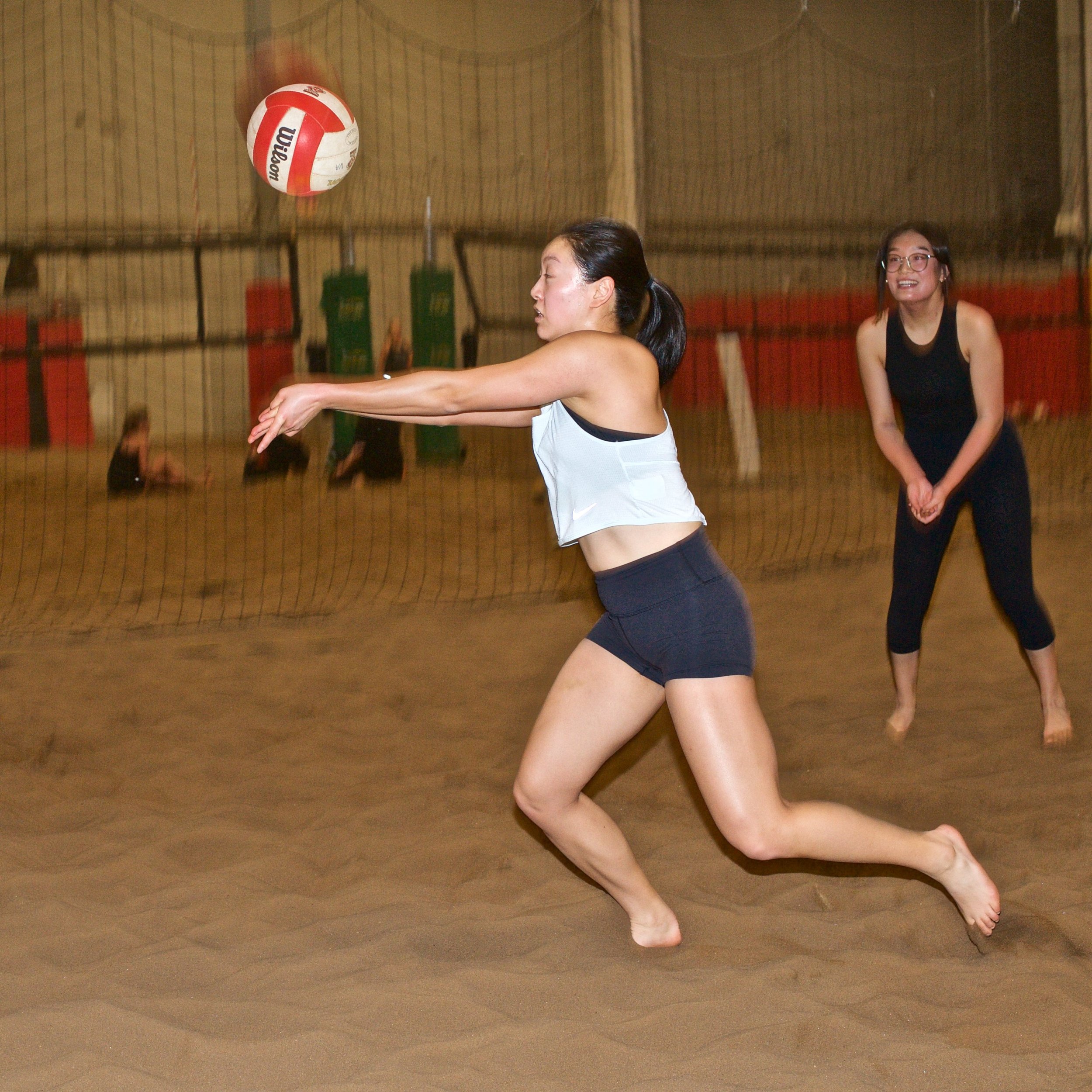
Beach Volleyball
Although similar to indoor volleyball, beach volleyball is played on a smaller sand court by 2 teams of 2 players each. The objective of the game is the same as indoor volleyball: score as many points as you can by grounding the ball on the opposing team’s side of the court.
The origins of the game stem from Waikiki Beach in Hawaii in 1915. It started as a recreational sport with similar rules to indoor volleyball, with each team having 6 players at first before being adjusted to have 2 players per team.
No prior skills are needed to start playing beach volleyball. It’s a physical sport that requires lots of running, jumping and even diving, so be sure to stretch and warm up before you play.
Beach ParaVolley is an adaptive version of the game for players with physical impairments. Modifications such as team size, where there are 3 players on each team instead of 2 allows for more comfortable game. Beach sitting volleyball is a variation of sitting volleyball that is currently in development.
-
Increased endurance and muscle strength.
Improved hand-eye coordination.
Build teamwork skills.
-
Comfortable clothes, preferably shorts and a T-shirt, a volleyball, and a net if you’re not playing on a rented court.
-
Beach volleyball injuries often occur in the arms and legs. Wrist and knee pain, sore forearms, and sprained ankles are all common. Be aware of your surroundings and teammates and always remember to stretch and warm up before playing.
Similar Sports: Volleyball, Wallyball
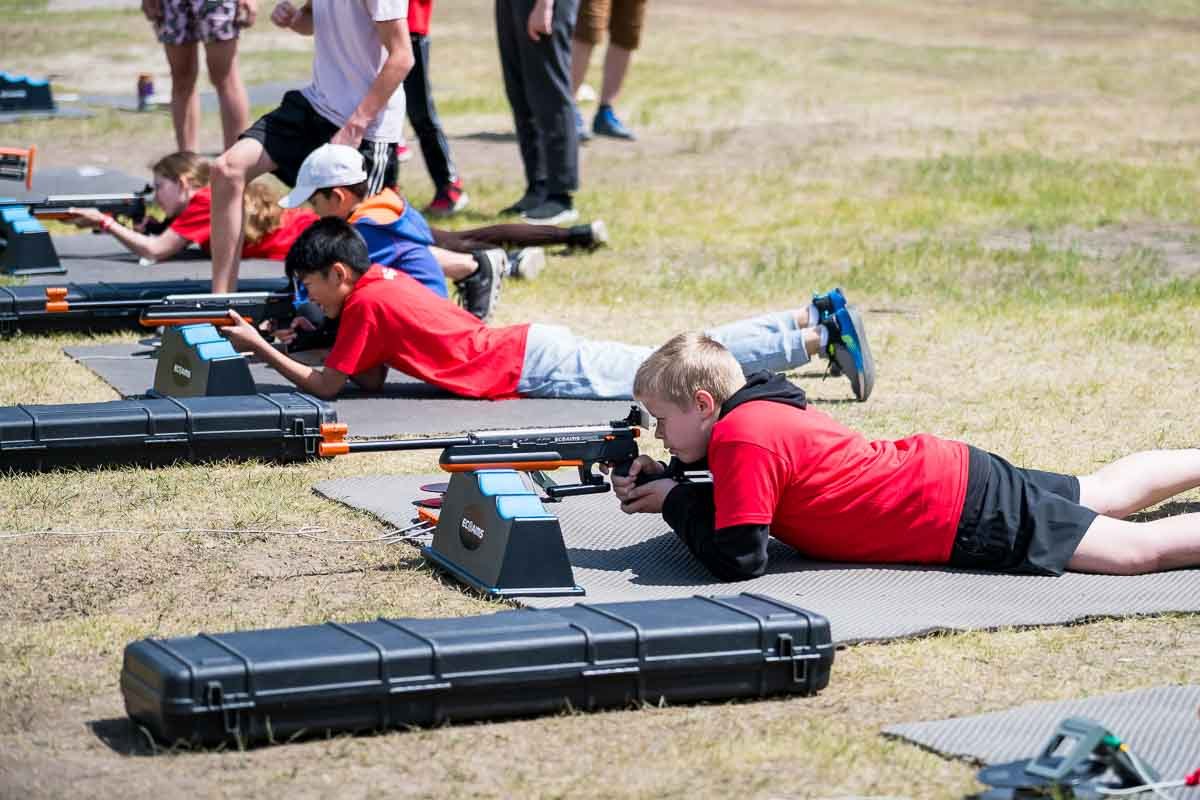
Biathalon
Biathlon is a competitive sport that involves both cross-country skiing and rifle shooting along a racecourse. Competitors compete for the shortest race time along a track that is split into skiing and shooting rounds. Depending on how competitors perform during shooting rounds, they may have extra time or distance added to their results.
The sport originated from skiing competitions in the Norwegian military during the 18th century. It was first called “military patrol” during the 1924 Olympics, before being reintroduced as biathlon at the 1960 Olympics.
Before getting started, participants should be comfortable on skis and more specifically, with cross-country skiing. Rifle shooting and safety will be taught to you during your lessons.
For participants with a physical and/or vision impairment, adjustments to the course and equipment have been made to make the sport more accessible, such as the use of air rifles and mechanical targets, or with an electronic rifle and target. You may also have a guide ski with you to help you navigate the course.
-
Increases cardiovascular fitness and endurance.
Improves focus.
Full body workout.
-
To compete in a biathlon, you’ll need a pair of cross-country skis, ski boots, and ski poles. Next, you’ll need a rifle with the appropriate ammunition, and a harness to carry the rifle (please check if the facility or classes will provide these to you).
-
Common injuries that biathlon athletes have include shoulder injuries, back and knee pain, ankle sprains, muscle sprains and overuse injuries. Remember to stretch, warm up muscles, as well as ensure that all equipment is secured safely onto your body before hitting the track.

Bike Polo
Bike polo is a variation of polo, but instead of riding horses, players ride bikes instead. Players are split into 2 teams of 3, or 2 teams of 5 or 6, and use mallets to score a small ball into the opposing player’s goal. Games can last between 10 – 15 minutes or 30 – 40 minutes depending on how many players are on the court.
The sport originated in Ireland in 1891 and was traditionally played on grass courts, but the origins of the modern version of the game, now played on hardcourts, has origins in Seattle in the early 2000’s.
To get started, you must be comfortable with riding a bike. It is a fast-paced game that requires quick maneuvering around the hardcourt at a moment’s notice.
Although an adaptive version of bike polo has yet to be established, you may want to contact your bike polo club and ask if they are able to provide any accommodation that would suit your needs.
Similar Sports: BMX, Mountain Biking, Equestrian
-
Improved cardiovascular health and endurance.
Improved coordination and agility.
Build teamwork skills.
-
To play bike polo, you'll need a bike, gloves, knee and elbow pads, and a helmet. A mallet can be provided upon request.
-
Apart from bruises, scrapes and cuts, injuries from collisions, mallets and the ball are all possible. Always be aware of your surroundings and other teammates to avoid injuries. Follow the rules of the game and remember to warm up thoroughly before playing.
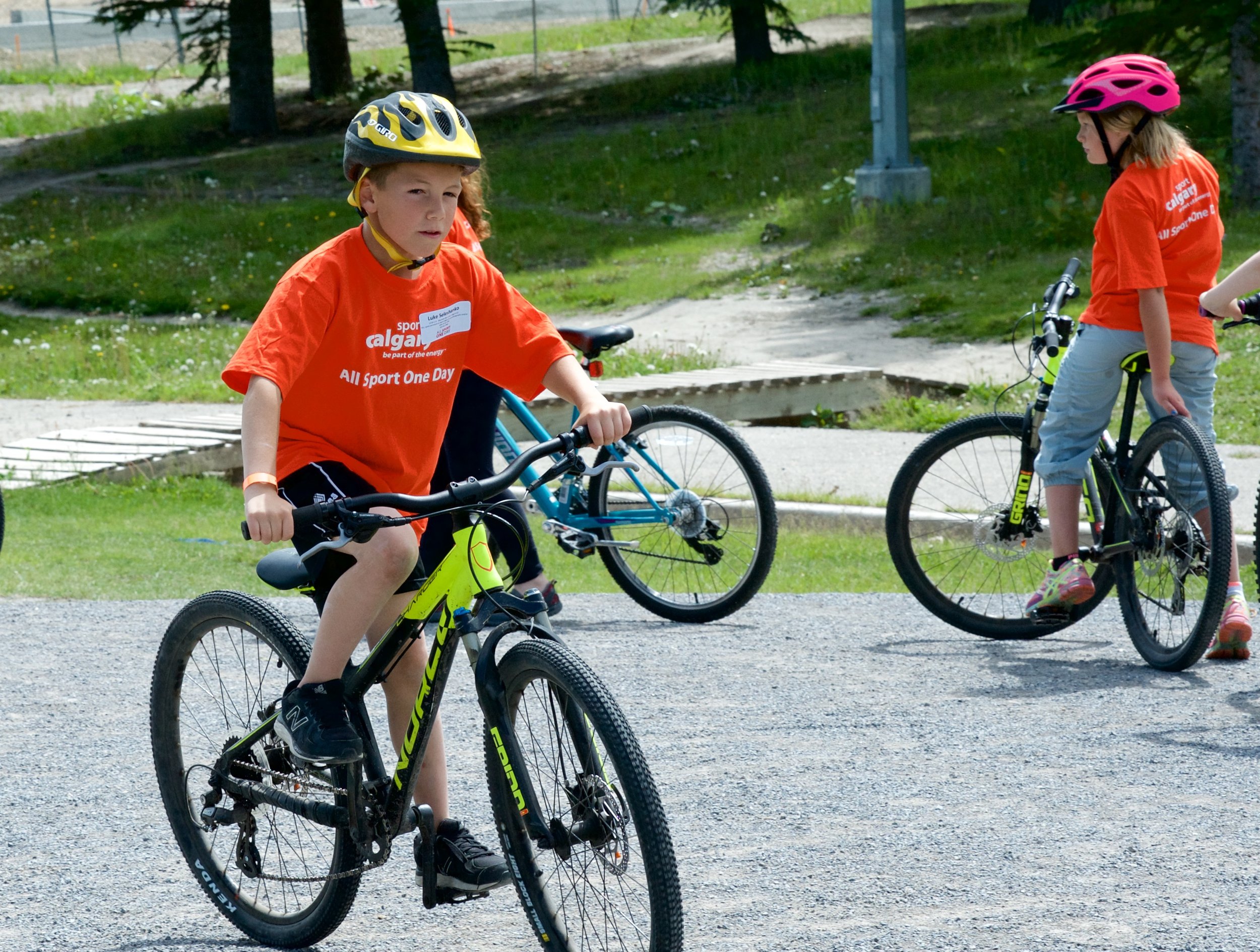
Biking/Cycling
Biking/cycling is a versatile physical activity. You can take a scenic spin through city parks, or cycle competitively in races and competitions. If you’ve never ridden a bike before, no worries! You’ll be able to learn it relatively quickly.
The very first bicycle originates from Germany in 1817, called a “laufmaschine”, which translates to “running machine” in English, and used an individual’s legs to propel itself. The blueprint for modern bicycles emerged decades later with the invention of “safety bicycles,” which was promoted as safer and for everyday use.
Make sure you know how to ride a bike before you start biking down busy pathways and streets! Start practicing on a quiet street, or even in a big field to get used to your bike. You’ll be relying on your sense of balance to start, but once you start peddling, it’ll be a breeze.
There are bikes that have been modified to make cycling and biking more accessible for individuals with physical and/or cognitive disabilities. Tricycles, handcycles and tandem cycling are all a part of adaptive cycling.
-
Increased stamina.
Increased muscle strength.
·It can be as relaxing or as intense as you want.
-
You can easily rent a bicycle and a helmet at many outdoor recreation centres, or parks. There are also bicycle rental shops where you can rent a bicycle for the day.
-
Bikers and Cyclists can be at risk for injuries in the back, legs/feet, and wrists and hands. Be sure that your bike is set up properly so you can bike comfortably without injuring yourself. As with any sport, make sure that you’ve stretched and warmed up before hopping on your bike.
Similar Sports: BMX, Mountain Biking, Track Cycling

Billiards
Billiards, or more commonly known as pool, is a sport played with a group of 15 small balls and 1 white ball on a rectangular table fitted with a felt-like cloth on the surface and along the sides. Players use a cue, a long stick that narrows into a rounded point, to hit the balls into the 6 pockets along the sides of the table to score points. Pool can be played with 2 players, or in teams.
Billiards is believed to have originated in various countries in Europe and Asia, however the first references to the game appear to be from 15th century Europe.
No special skills are required to get started with billiards. You’ll be able to learn the rules of the game as you play. The sport does require some bending and stretching as you’ll need to get low to the table to line up your cue with the balls.
Special pieces of equipment can help individuals with physical and/or cognitive disabilities play billiards more easily. For example, small stands placed on the table for the cue to rest on allows for a more stable aim and shot.
-
Improves and builds focus.
Improves hand-eye coordination.
Improves balance.
-
You’ll need a cue, billiard balls and a billiard table, which can be found in billiard halls, pubs, or even at your friends and families’ houses!
-
Most billiards injuries occur in the neck and back due to stretching over the table and holding awkward positions while aiming. Be sure to stretch and warm up, and take lots of breaks to allow your body to rest.
Similar Sports: Bowling, Lawn Bowling, Golf
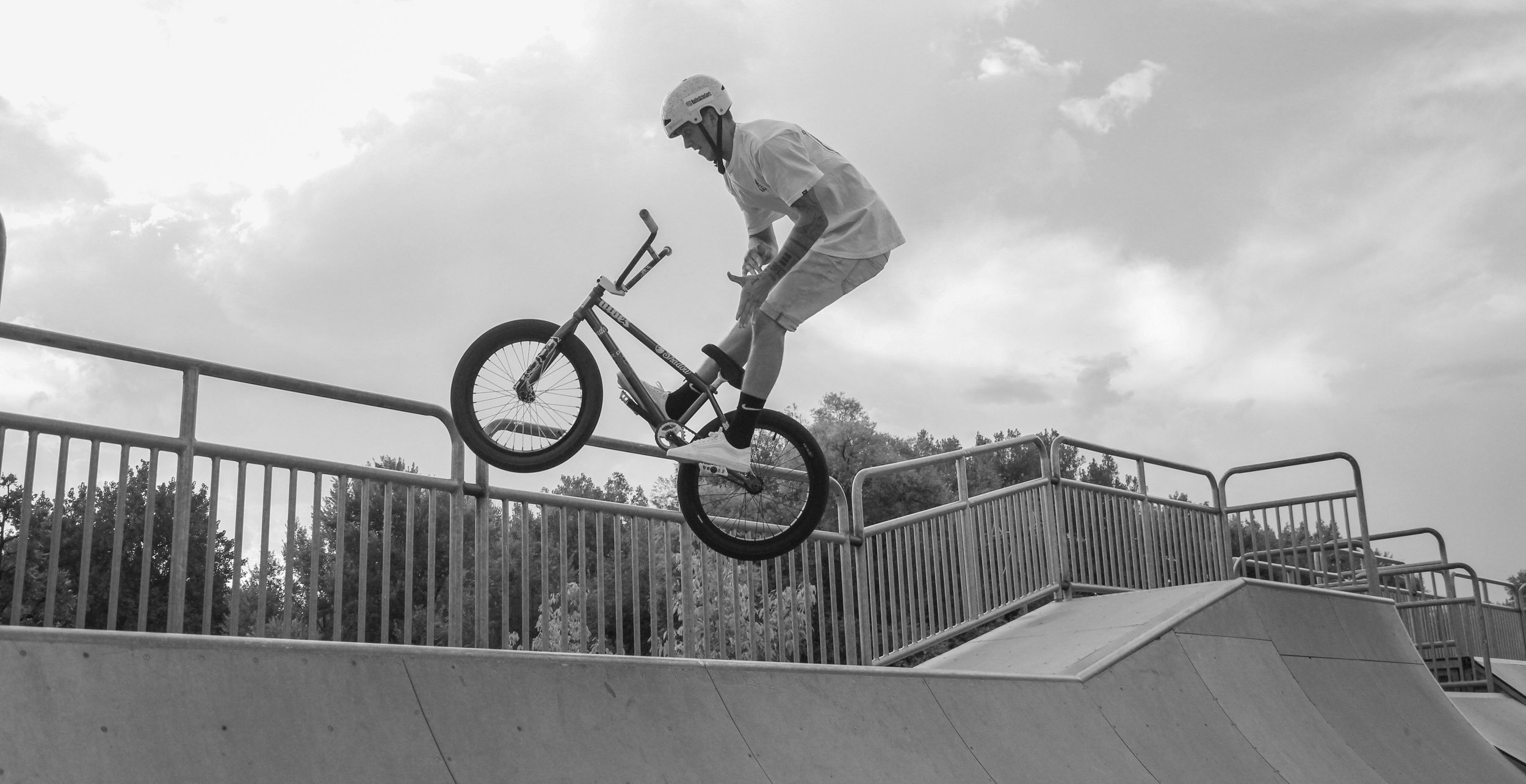
BMX
BMX, short for bicycle motorcross, is a bicycle sport that involves riding a specialized bike, called a BMX bike, along rough (usually dirt) terrain, or on specialized courses. Popular forms of BMX biking include freestyle BMX, where bikers will perform tricks while maneuvering an obstacle course, and BMX racing, where bikers will race on specialized courses.
BMX biking started in California in the 1970’s, where children would race their road bicycles on dirt tracks. Within a few years, the sport exploded in popularity in the United States, then surged in popularity in the United Kingdom during the 1980’s.
You’ll need to be comfortable with riding a bike before you hit the dirt tracks. Knowing how to maneuver, stop and avoid obstacles with your bike is essential before you attempt any stunts or any courses.
Although there are yet to be any adaptive BMX biking programs in Calgary, there are several general adaptive biking programs available in the city for those with physical and/or cognitive disabilities.
Similar Sports: Biking/Cycling, Mountain Biking, Track Cycling
-
Increases core muscle strength.
Improves cardiovascular fitness.
Improves balance and hand-eye coordination.
-
You’ll need a BMX bike, a helmet, gloves, and knee and elbow pads. Wear comfortable fitted clothing to avoid getting caught on the bike.
-
The most common BMX injuries include cuts, bruises, and scrapes. More serious injuries include fractures and concussions. Make sure that you stretch and warm up thoroughly as well as ensure that all protective equipment is on properly to avoid any serious injury.

Bobsleigh
Bobsleigh is a high-speed winter sport where an athlete pushes themselves (and/or their teammates) down an ice track in a specialized sleigh. To start, an athlete must sprint and push their sled a 50-metre distance before loading themselves into the sled with their teammate(s). From there, it is up to the driver to use steering devices at the front of the sled to steer through the icy track at speeds up to 150km/hr.
Bobsleigh has its origins in Switzerland during the 19th century, where tourists in the winter resort town of St. Moritz rode sleighs between snowy alleyways and roads for fun. The sport became a part of the Olympics in 1924 in Chamonix.
No special skills are required before learning how to bobsleigh. You’ll need to build up your strength and speed to be able to push the sleigh to start.
Modifications made to bobsleighs make the sport more adaptive for participants with physical disabilities. Alberta Bobsleigh is developing an adaptive bobsleigh program that will provide opportunities for athletes with physical disabilities to participate in the sport. Feel free to contact them for more information!
-
Improved cardiovascular fitness.
Increased strength.
Improved hand-eye coordination and balance.
-
In the beginning, you will not need any special equipment; it will be provided for you at the bobsleigh centre, so you can come to class in comfortable fitted athletic clothing. If you want to participate competitively, you’ll need a sleigh, helmet, a race suit and proper footwear fitted with ice spikes.
-
The most common bobsleigh injuries include bruises, sprains, and back and neck injuries. More serious injuries include concussions and broken bones. Remember to follow all safety procedures and remember to ensure that all your safety equipment is secured and fitted properly. Don’t forget to stretch and warm up thoroughly before you get onto the track.

Bowling
Bowling is a sport where a bowler rolls a bowling ball down a wooden lane to a group of 9 or 10 pins that are positioned at the end of the lane. The goal is to knock down as many pins as possible in 2 attempts per frame (a single round of bowling).
Bowling as we know of it today is derived from the German game of kegeling, which used 9 pins to play, and was played by the common folk compared to the upper-class, who mainly enjoyed lawn bowling.
There are no special skills that are required to start bowling. It is a full body workout that engages muscles in the arms, legs and torso, allowing you to build up overall strength and improve your balance.
Many bowling facilities in Calgary are accessible to individuals of all abilities. For more information, please contact your local bowling provider to see what kinds of accommodation they may be able to provide for you.
-
Increased muscle strength.
Improved balance.
A great way to socialize!
-
Unless you are interested in bowling competitively, no special equipment is required to play. You can rent out bowling shoes, and bowling lanes (that come with bowling balls) at any bowling alley. If you are interested in competitive bowling, you’ll need your own bowling balls, shoes and other specialized equipment such as towels, thumb tape and cleaners.
-
Common bowling injuries mainly include muscle soreness and fatigue to the legs, back, hips, shoulders and arms. Be sure to warm up and stretch thoroughly before bowling and keep a good grip on your bowling ball as you play. Keep your surroundings clear before you bowl to avoid any possible injury.
Similar Sports: Lawn Bowling, Curling
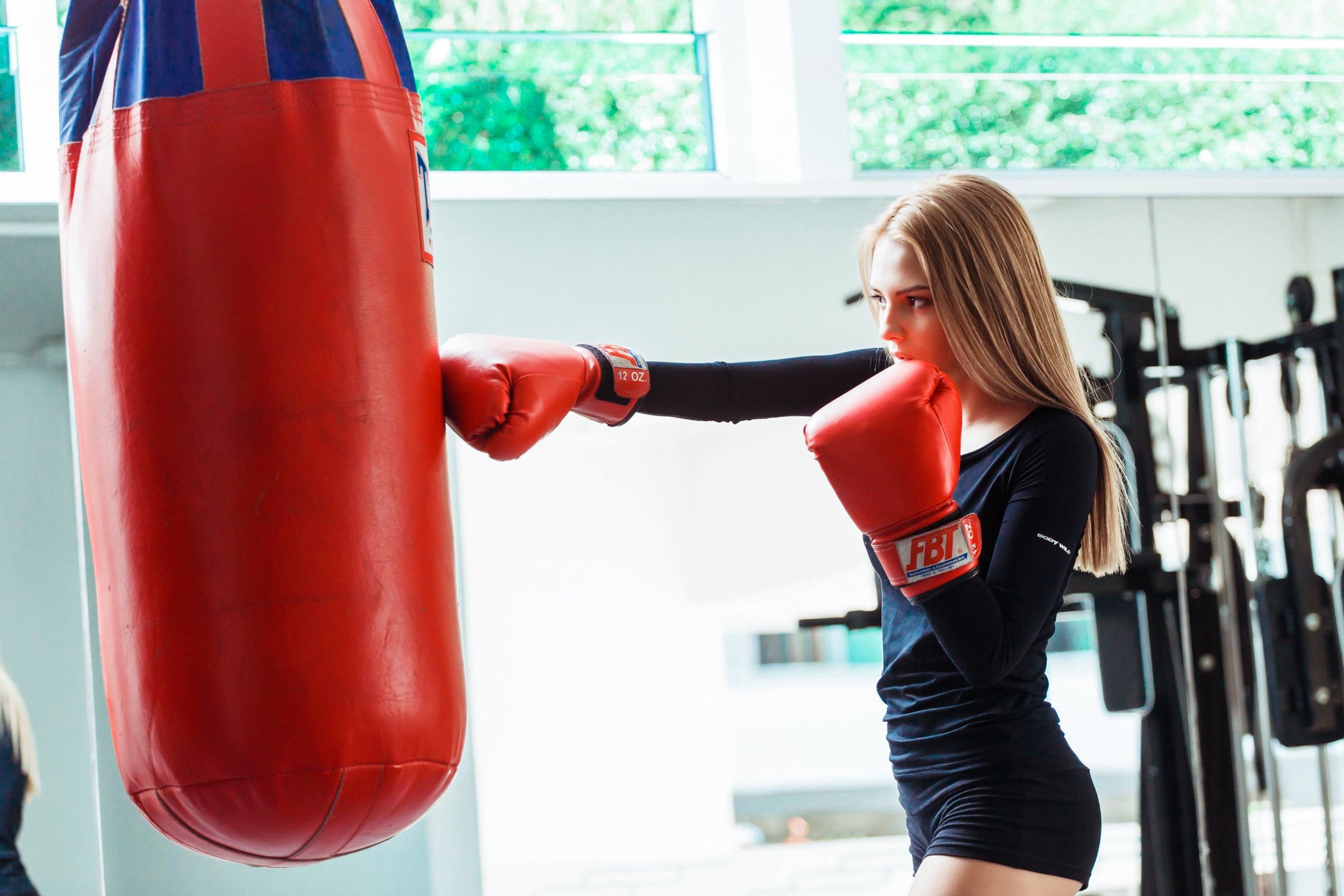
Boxing
Unlike boxing an opponent in a ring, fitness boxing is a safer, but just as fun alternative to get a good cardio workout. Usually done in group classes, fitness boxing has participants punching at punching bags, or shadowboxing, where you punch at the air.
The earliest source for boxing originates from the 6th century in present-day Ethiopia. From there, it spread to Ancient Egypt, then to Ancient Rome.
There are no special skills that are needed to get started with boxing. You may become very tired and a bit sore after your first session, but that is completely normal! Through fitness boxing, you’ll be able to build up your strength and endurance the more you box.
Fitness boxing is a highly adaptable sport. Techniques and routines can be easily adjusted for participants with physical and/or cognitive disabilities. There are several clubs in Calgary that provide adaptive boxing, such as OBC Boxing 4 Kids. Please contact the club of your choice to ask about what kinds of accommodation they can offer.
-
Reduce stress.
Improved coordination.
Improved cardiovascular health.
-
Come to classes dressed in comfortable athletic clothing and a pair of athletic shoes. You’ll be provided with punching bags and boxing gloves in class
-
Common fitness boxing injuries include pain in the shoulders and wrists, as well as sprains in various parts of the hands and wrists from using the punching bags, incorrect technique, or overuse. Make sure to warm up thoroughly before practicing and/or sparring. Take frequent breaks and know when to stop to avoid serious injury.
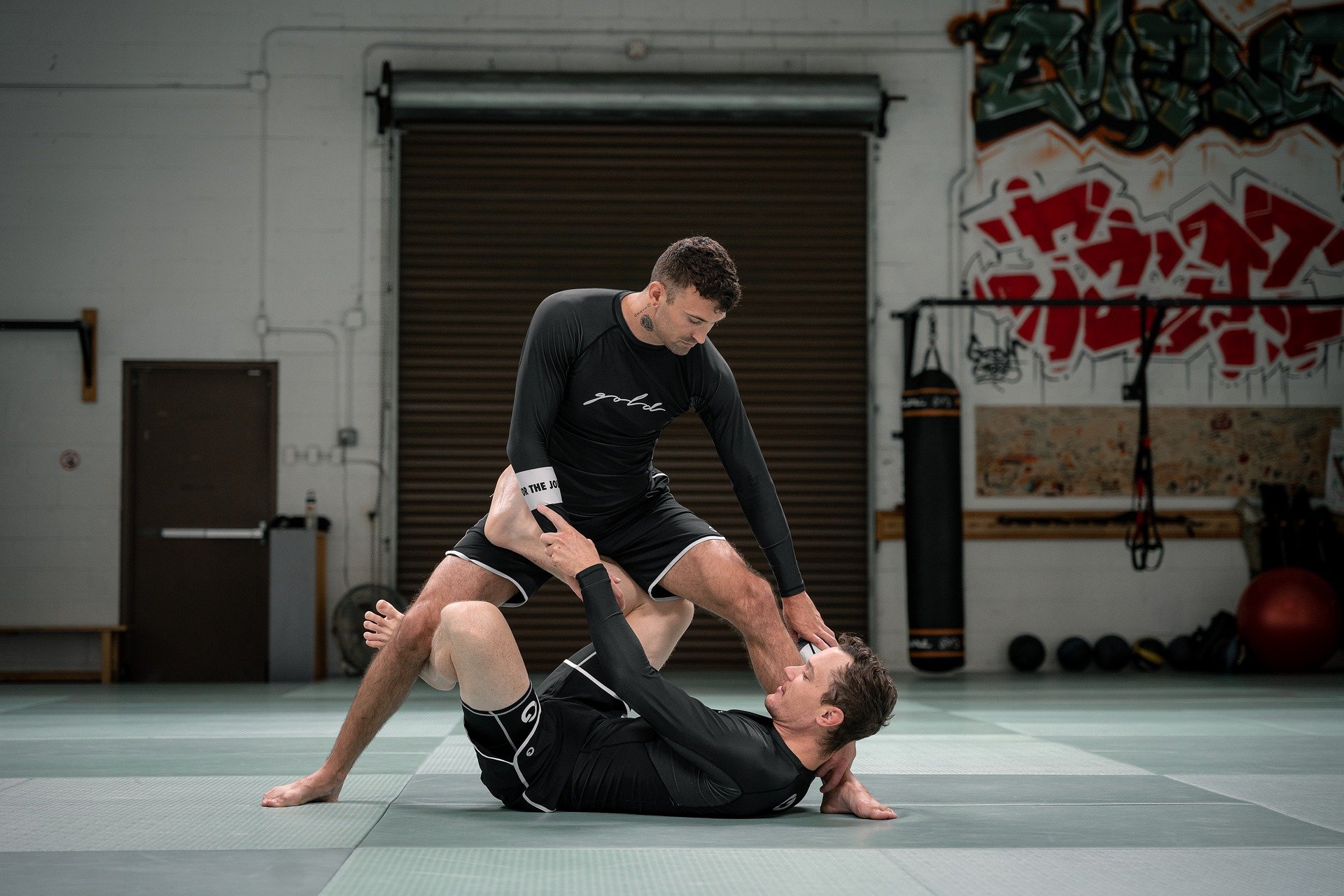
Brazilian Jiu-Jitsu
Brazilian jiu-jitsu is a close combat martial art that uses grappling, holding and ground fighting techniques, which are focused on taking down an opponent and keeping them on the ground to gain dominance and minimize harm.
Brazilian jiu-jitsu originated in the 1920’s in Brazil, where the sport quickly evolved to mainly use ground fighting techniques for self-defense and to minimize harm to opponents.
No special skills are required before getting started with Brazilian jiu-jitsu. You’ll make use of your entire body while you practice, but you’ll be able to build up your strength, endurance, and stamina the more you practice.
Brazilian jiu-jitsu techniques can be adjusted to fit the needs of those who have physical and/or cognitive disabilities. Please contact your preferred Brazilian jiu-jitsu provider to ask if they can provide any accommodation for you.
-
Increased flexibility.
Increased strength.
Improved cardiovascular health.
-
Depending on your Brazilian jiu-jitsu school, you may need to purchase a uniform. Otherwise, come to classes in comfortable athletic clothes such as a T-shirt and shorts.
-
Common Brazilian jiu-jitsu injuries include strains and sprains to various parts of the body such as the neck, hands, knees, and shoulders. Remember to warm up and stretch thoroughly to prevent overuse injuries before sparring. Be aware of your surroundings to avoid injuring yourself and others.
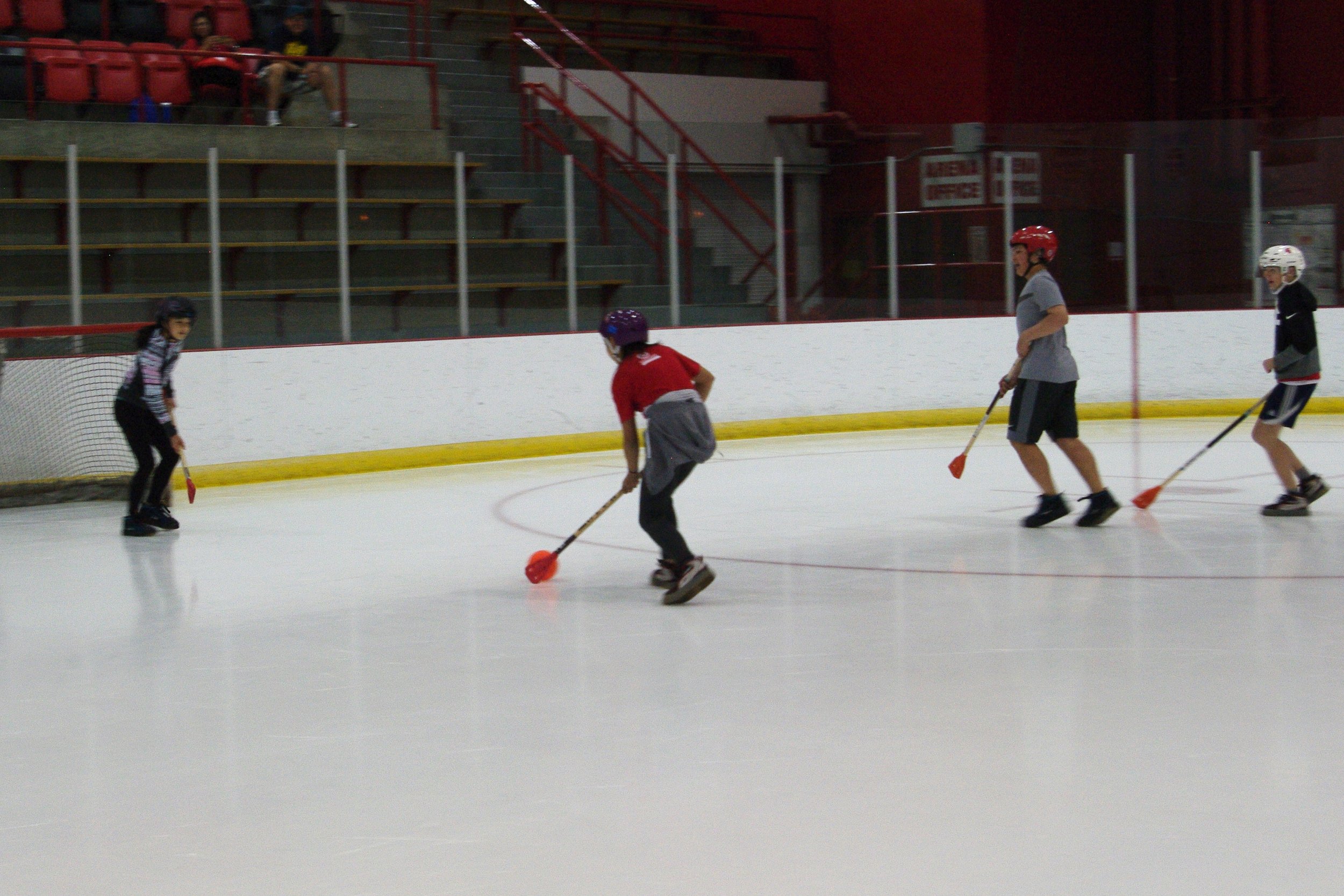
Broomball
Broomball is a team winter sport that is played on ice or snow. Unlike other ice sports like hockey, broomball is not played on skates, but rather on special shoes that give players more traction on the ice. Players move a ball around the rink with broomball sticks (which are sticks with a plastic paddle at the end) with the goal of scoring as many points as possible on the opposing team.
Broomball is believed to have originated from Indigenous North American groups, who then introduced the sport to settlers. The first recorded game of broomball occurred in Saskatchewan in the early 20th century before spreading into the United States and increasing in popularity throughout North America.
There are no special skills needed to start playing broomball! The sport requires full body movement as players will be running and using their arms to sweep the ball into the goal!
Although an adaptive version of broomball has yet to be developed, you can contact your local broomball league to see if they offer any accommodation for players with physical and/or cognitive disabilities.
Similar Sports: Floor Hockey, Ice Hockey, Ringette
-
Improve cardiovascular health.
Improve hand-eye coordination and balance.
Improve teamwork skills.
-
You’ll need a broomball stick, broomball ball, broomball shoes and protective equipment such as a hockey helmet, gloves, and shin guards.
-
Common injuries that many broomball players sustain include sprains, strains, bruises, and in more serious cases, fractures. Players must be aware of their surroundings and other players while on the ice to avoid serious collisions or injuries. Make sure that you stretch and warm up thoroughly and that all your protective equipment is on properly before hitting the ice.
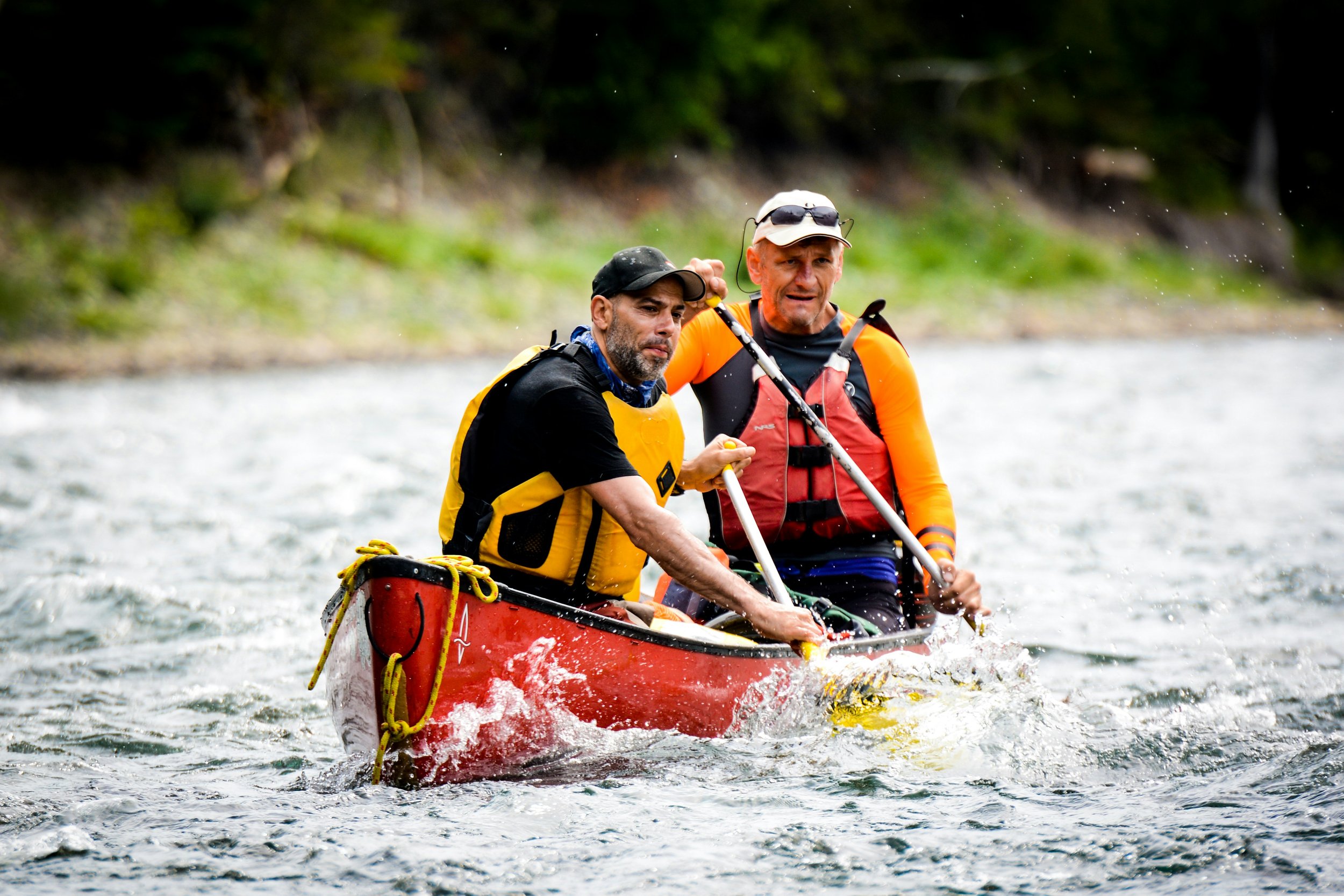
Canoe
A canoe is a lightweight boat made of plastic or of wood that is typically narrow on both ends. Paddlers will use a single-bladed paddle to propel themselves across the water for leisure or for competition. Competitive canoeing includes disciplines such as canoe sprint and canoe slalom.
Canoes were mainly used as a form of transportation for many cultures throughout history. The first canoes were called “dugouts,” and were carved out of tree trunks and other tree parts, while Indigenous North Americans used skinned bark over light wooden frames, called “bark canoes.”
No special skills are required to get started with canoeing. You’ll be making use of your arms, shoulders and torso to help propel you across the water. You can simply rent a canoe, paddle and life jacket for a fee from several recreational and lake facilities. To start, find a calm body of water to practice and become familiar with paddling, steering, and stopping, before embarking on any big adventures.
Specialized equipment and accommodations are available to help individuals with physical and/or cognitive disabilities canoe. Please contact the canoe provider of your choice to see what kinds of accommodation they will be able to provide for you.
-
Improved cardiovascular fitness.
Increased muscle strength.
Enjoy a relaxing, low-impact activity out in nature.
-
You can rent all the equipment for your canoeing adventure, a canoe, lifejacket and paddles, from several recreational and lake facilities for a fee. Don’t forget to dress for the weather, bring sunscreen, and prepare a water bottle and food if you plan on being on the water for several hours.
If you want to canoe competitively, then you may need to purchase your own canoe, paddle, lifejacket, and helmet.
-
Common canoeing injuries include strains and sprains to various parts of the body like the shoulders and wrists. The environment can also pose a hazard, as weather conditions, and the body of water that you’ll be paddling on can be a cause for injury. Ensure that you’ve stretched and warmed up thoroughly and that you’ve prepared all your safety equipment before you board the canoe.

Capoeira
Capoeira is an Afro-Brazilian non-contact martial arts mixed with dance that was developed in Brazil. Rather than having fixed stances and forms, it emphasizes agility, with fluid movements, and is performed with music.
Capoeira was developed by enslaved Black/Afro-Brazilians and indigenous Brazilians in the 1500s as a form of self-defense, disguised as dance, against their oppressors.
No prior skills are needed to start doing capoeira. Your teachers will teach you the basics and will lead you through each step. All you need to do is show up and have fun!
Please contact your capoeira provider to see if they will provide accommodations, such as a smaller, or even private lessons, for participants with a physical and/or cognitive disability.
-
Increased flexibility and strength.
Increased stamina and agility.
Relieve stress through music and dance.
-
Come to your classes or lessons wearing comfortable clothing (no shorts or jeans).
-
Common capoeira injuries include sprains, strains and bruises, mostly to the knees, ankles and hips. Participants need to be careful and be aware of their surroundings to avoid being kicked or hit by other participants. As always, warming up and stretching is important to avoid any injuries.
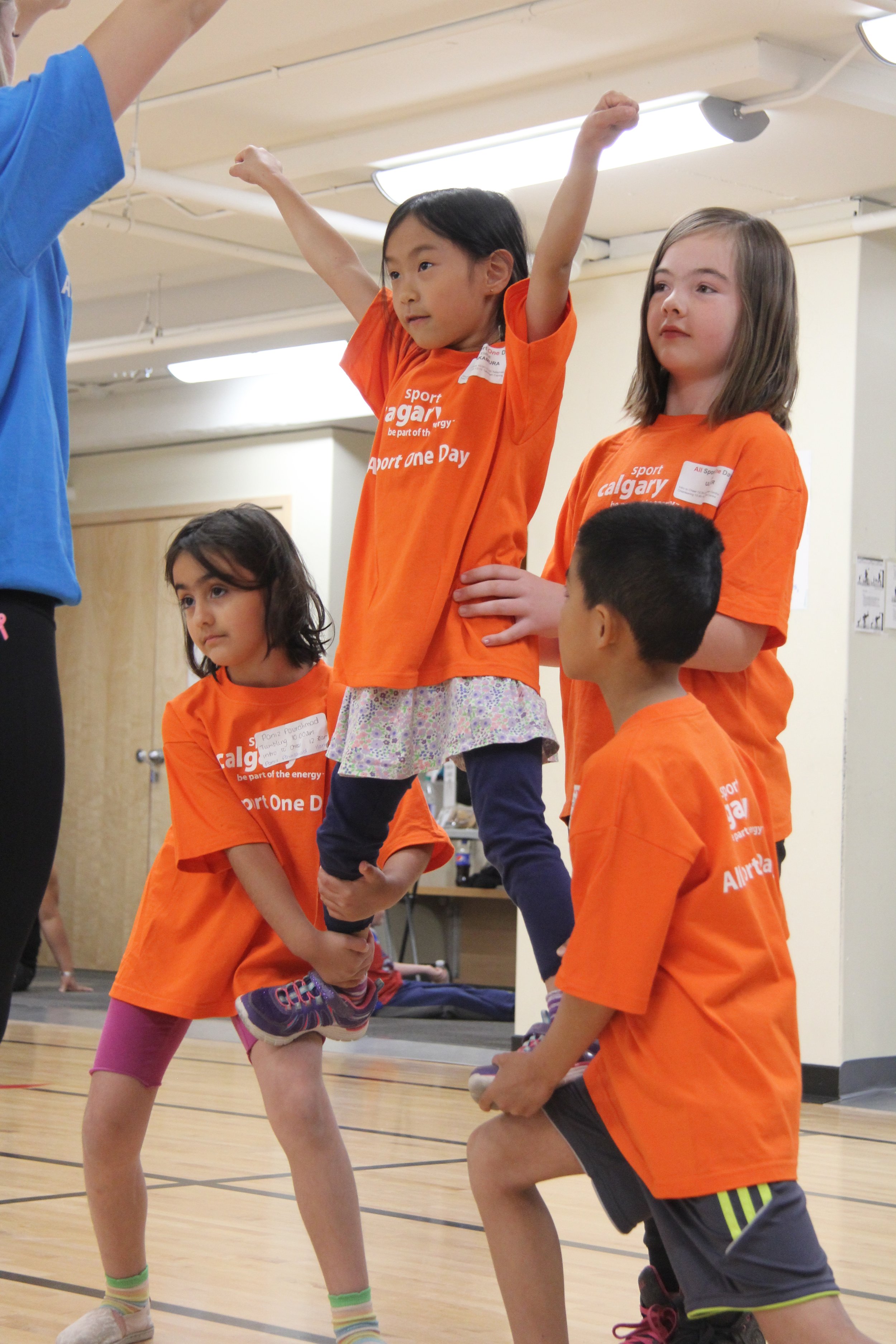
Cheerleading
Cheerleading is a sport where participants perform intricate cheer routines in large groups. It takes the form of intensely physical routines that involve cheering, jumping, tumbling and various other stunts. Cheerleading can be done for competitions, entertainment and/or, cheering on sports team. Despite the belief that cheerleading is a sport exclusively for women, it is a sport that is open and welcoming of all, regardless of ethnicity, disability, sex and gender.
Originally, cheerleading was an all-male activity done by attendees and athletes during sports games at colleges and universities in the United States. Women didn’t become prominent in the cheerleading scene until the 1940s, and soon exploded in popularity among women in the following decades.
Cheerleading is an intensely physical sport that requires use of the entire body to perform routines and execute stunts. You’ll need to have a bit of flexibility and good mobility to start, but as with any sport, you’ll be able to train and practice your way to mastery.
Adaptive cheerleading allows for individuals with physical and/or cognitive disabilities to be involved in the sport. Accessible routines, as well as flat and smooth terrain to perform on, make it easier for cheerleaders of all abilities to perform and boost their confidence.
Similar Sports: Dance, Gymnastics, Artistic Swimming
-
Improved stamina, endurance and flexibility.
Increased confidence.
Gain teamworking skills.
-
No special equipment is needed. Come to class in fitted athletic wear (to avoid injuries) and athletic shoes. You may be required to purchase a uniform for competitions.
-
Because cheerleading involves stunts, injuries can range from muscle strains and sprains to fractures and dislocations. It is important to be well prepared, be aware of your surroundings and fellow teammates, and thoroughly warmed up before attempting any difficult stunts and routines.

Circus
Circus consists of several kinds of highly technical acrobatic and artistic routines that are performed alongside music and visual presentations.
The format of the modern circus emerged in England in the 18th century, where performances such as trick horse riding and acrobatics were brought together into one show. The circus arrived in North America in 1793, where the first show was held in Philadelphia.
Circus performances require a high level of technical and physical skill to perform acrobatics and stunts. However, don’t let that stop you from trying out beginner level classes that will guide you through the basics of gymnastics and aerial performance while building your strength and flexibility!
Circus routines and techniques can be adjusted to allow for individuals with physical and/or cognitive disabilities to participate. Please contact your circus provider to see if they can provide any accommodation for you.
Similar Sports: Dance, Gymnastics, Artistic Swimming, Parkour, Cheerleading
-
Increased muscle strength.
Increased flexibility.
Increased balance.
-
No specialized equipment is required. You will be provided with the equipment you need during your classes. You can come to classes in fitted athletic clothing. If you wish to pursue circus more competitively, then you may be required to purchase a uniform.
-
The most common injury for circus participants includes strains and sprains, with more serious injuries being fractures. Remember to stretch and warm up thoroughly before practicing. Ensure that you follow all safety precautions set by your circus provider and to be aware of your surroundings to avoid any serious injury to yourself and others.
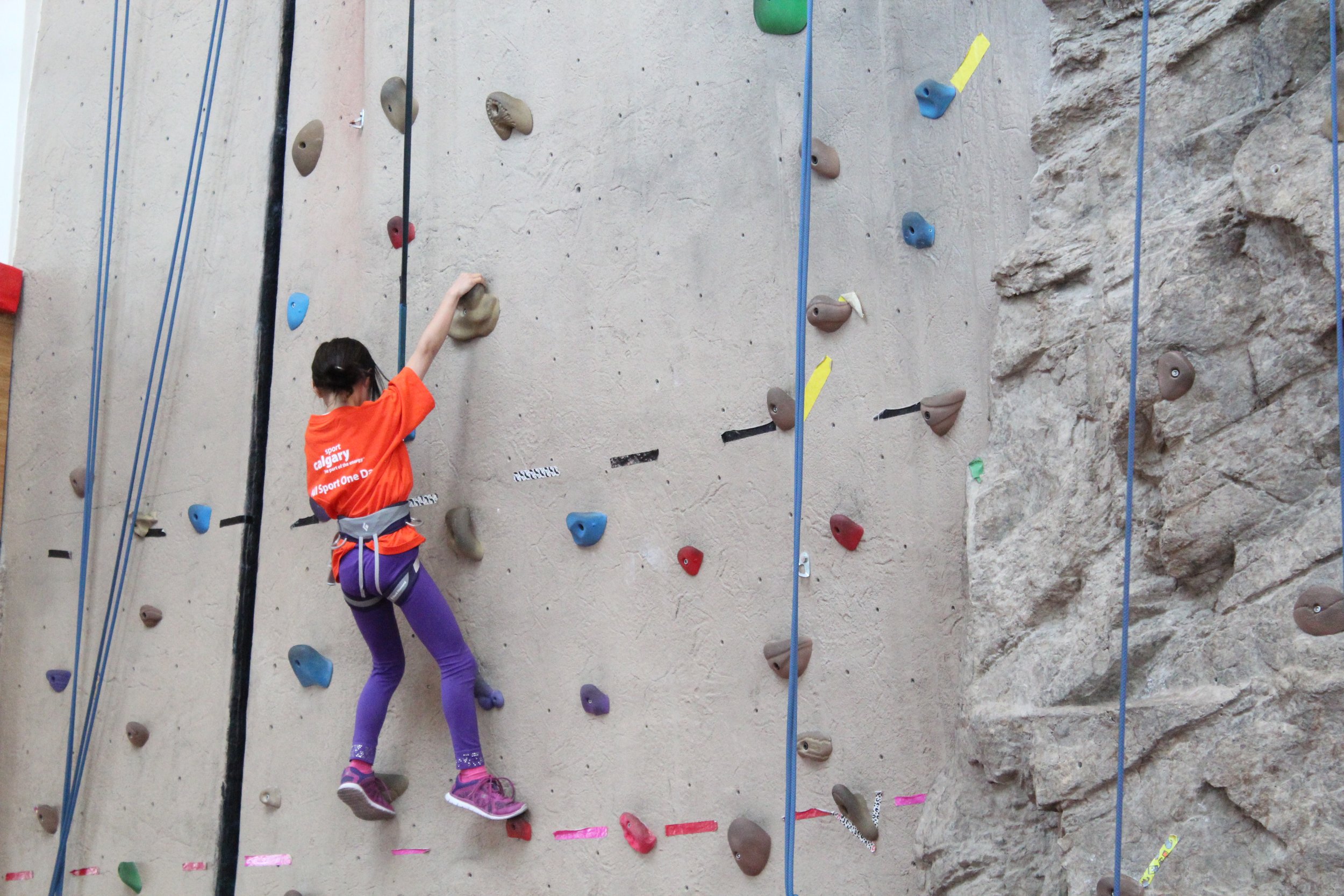
Climbing
Climbing is a sport that requires using hands and feet to propel yourself up a steep wall with protective equipment such as a helmet, a harness and ropes and clips. You can climb up actual mountains, or on artificial walls at your closest climbing gym. There are three different types of climbing that you can try out: bouldering, single-pitch climbing and big multi-pitch climbing.
Climbing for sport and recreation became prominent in the European Alps in the 19th century with the advent of climbing clubs. The modern climbing wall didn’t appear until 1964, with the first climbing gyms opening in Europe and the United States in the 1980s.
Rock climbing does not require any special skills to get started, but you will be using your strength in your arms, legs, and core to pull yourself up vertical surfaces. Don’t be discouraged if you can’t get to the top on your first try! Remember to take it slowly and at your own pace, and you’ll be climbing to the top in no time. You can rent climbing equipment such as helmets, harnesses, clips, chalk, and climbing shoes at any climbing facility. Remember to dress in comfortable, fitting clothing.
Paraclimbing makes climbing accessible to those with physical and/or cognitive disability. The International Climbing Federation identifies three competing classes: blind sport, amputees, and limited reach, power or stability. Contact your climbing provider to ask if they have any accommodations for you.
-
Increased overall body strength and grip
Improves balance and endurance.
Builds confidence and problem-solving skills.
-
You can rent climbing equipment such as helmets, harnesses, clips, chalk, and climbing shoes at any climbing facility. Remember to dress in comfortable, fitting clothing.
-
It is important to stretch and warm up before starting to climb to prevent injuries to your body, especially in the arms, hands, and legs. You’ll most likely have some bruises, hand calluses, and develop some soreness after going climbing for the first time.

Country & Swing
Country and Swing are popular styles of dancing that are danced with a partner. Country dancing is typically danced to country-western music, while swing dancing is usually danced to jazz music.
The origins of Swing dancing began with African-American communities in Harlem in the 1930s, while Country dancing was developed from dance styles that were brought to North America from Europe in the 1700s.
All you need to get started is a willingness to learn how to dance! Be ready to move your body to the rhythm and beat. Don’t forget to have fun!
There are classes available through our sports providers that offer accessible dance classes, with smaller class sizes, creating a safe space for those with physical and/or cognitive disabilities.
Similar Sports: Figure Skating, Rhythmic Gymnastics, Winter Guard
-
Provides a fun, and stress-relieving experience.
Increased aerobic fitness.
Improved coordination.
-
Comfortable clothes and shoes.
-
Warming up and stretching properly is key before you start dancing to prevent injuries to the ankles, hips, and back. Be aware of your surroundings, your partner, and other dancers to avoid any possible injuries.

Cricket
Cricket has been a popular sport since the 16th century and was first recorded in Canada during the year 1785 in Montreal. The game is played with two teams. Each team is made up of eleven players who play various positions including batsmen, fielder and wicket keeper. While one team bats the other bowls and fields, these roles are switched after a team has lost all their wickets or the set time has expired. The goal is to score more runs than the other team.
Cricket is believed to have developed out of England in the late 16th century. After becoming an established sport during the 18th century, the sport spread internationally in the following centuries and is now the second-most popular spectator sport in the world.
The game is played on an oval field with a rectangular pitch in the center. No special skills are required just some friends and a bat and a ball.
Cricket has become a sport many can get involved. Table cricket is a great adaptation first created for those with cerebral palsy and wheelchair cricket is becoming increasingly popular as well.
-
Team building
Improved motor skills
Increased Stamina
Improved hand-eye coordination
-
Some equipment is necessary including a uniform known as cricket whites. Protective equipment is also a must, and this includes pads for your shins and thighs, gloves and a helmet. A cricket ball and bat are the most important.
-
A cricket ball is quite hard and is hit at fast speeds during play creating a risk for injury. It is best to wear the proper protective gear to prevent injury.
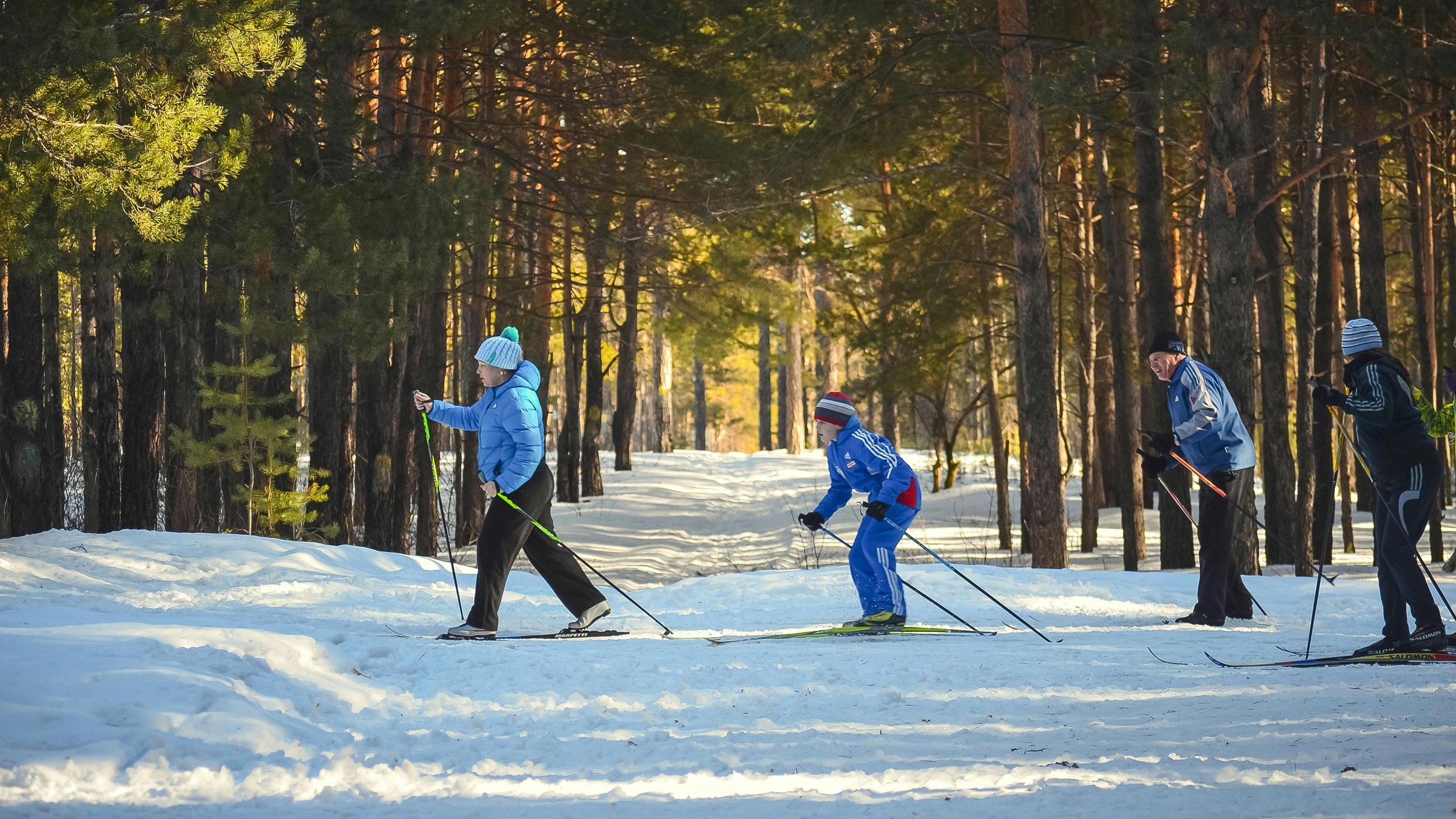
Cross Country Skiing
Cross country skiing is a form of skiing where skiers glide across a mostly flat snow-covered terrain by pushing forward in a side-to-side motion on skis, propelling themselves with the help of two ski poles. There are designated ski trails in the mountains and around the city, or you can ski around your neighbourhood and local parks.
Skiing started as a method of transportation in Scandinavia and often had both skis with different lengths; one gliding and one shorter one for traction. The modern sport originated from Norwegian military competitions before developing into the modern-day sport.
You do not need to know any prior skills before starting your cross-country skiing journey. It is a relatively easy sport to learn; once you get used to the skis and practice the basic movements, you’ll be gliding through the trails in no time!
Adaptive versions of cross-country skiing make the sport accessible to individuals with physical and/or cognitive disabilities. Modifications to skis, such as sit-skis, and support staff, are available to help guide skiers through the course.
Similar Sports: Skiing, Snowboarding
-
A full body workout
Improved coordination and balance.
Get in touch with nature.
-
Cross-country skis, boots, and poles (which are available to rent), a winter jacket, and winter gloves.
-
Common injuries include muscle and joint strain, as well as falls. Cross country skiers must be aware of the environmental risks – the weather, course terrain, and even wildlife can cause your cross-country trip to go awry. Be well prepared and be aware of possible risks before heading out to ski.
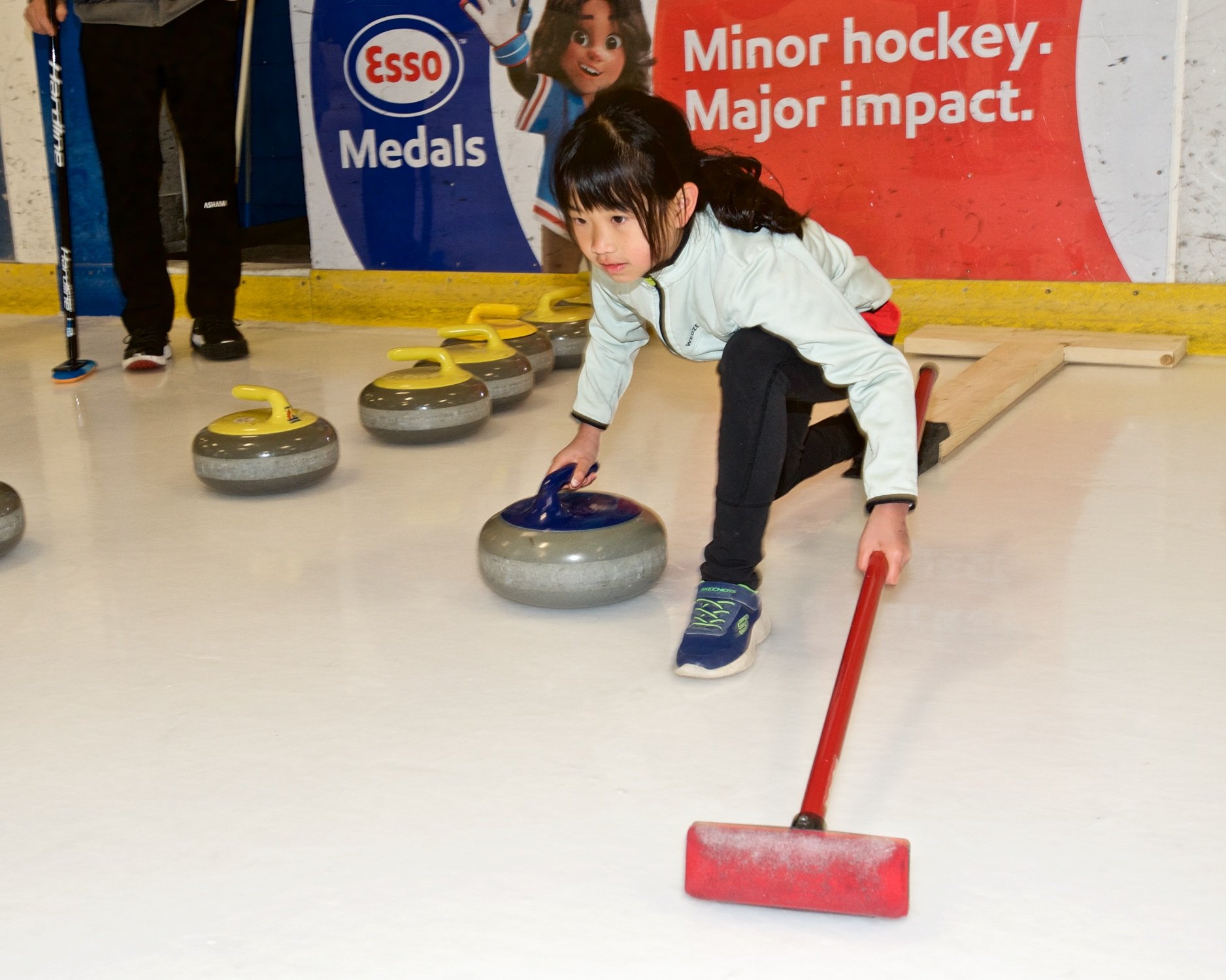
Curling
Curling was invented in Scotland back in the 16th century. Now curling is quite popular in many countries including Canada. The game is played on a long, thin sheet of ice that has a circular target at each end. Curling is normally played with two teams each with four players. Eight rocks are assigned to a team and the goal is to slide these rocks near the center of the target or ‘house’. The team whose stone is closest to the center will get points for that end.
No prior skills are needed to learn how to curl and curling clubs will often have equipment you can borrow to try out the sport.
Besides ice and granite stones some other equipment required to play include curling shoes which have a smooth sole for gliding, as well as a broom for sweeping the ice.
Curling can be adapted in many ways so more people can play. It can be played on the floor instead of the ice so people of all ages and abilities can take part. Throwing aids can be used as well for people who may not be able to bend down to throw stones.
Similar Sports: Archery, Axe Throwing, Lawn Bowling
-
Improves aerobic fitness
Teaches strategy and precision
Great source of social interaction
-
You'll need a pair of curling shoes and a curling broom. Wear something warm with closed-toed shoes.
-
It is important to stretch and warm up before starting to climb to prevent injuries to your body, especially in the arms, hands, and legs. You’ll most likely have some bruises, hand calluses, and develop some soreness after going climbing for the first time.
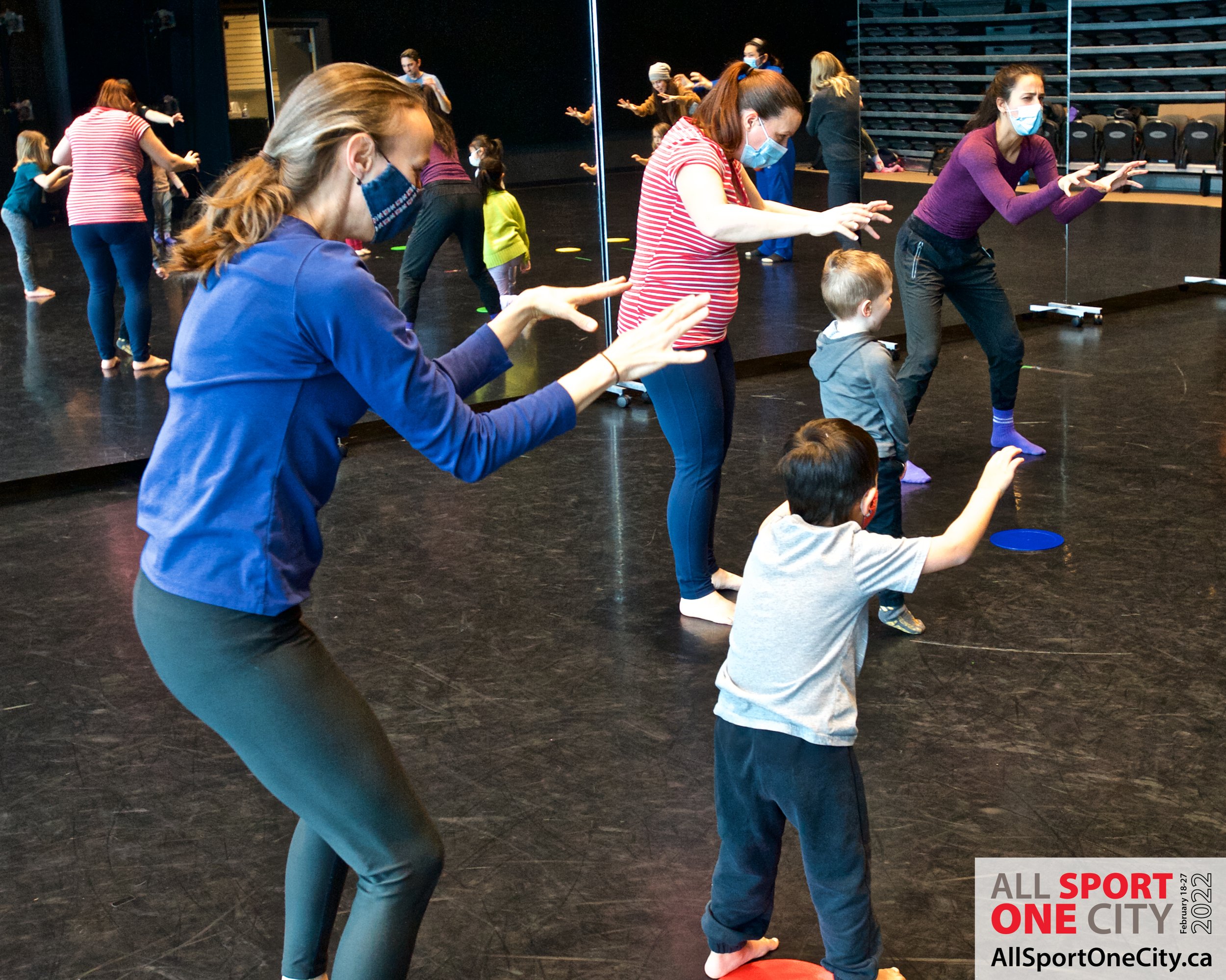
Dance
Dance is both a sport and an art form, involving a series of aesthetic body movements that are performed alongside music that conveys symbolism, or is done for fun. With an endless list of dance types, you’ll be able to find one that suits your tastes and/or physical needs!
Dance has been a part of human history for thousands of years and has been a key part of social and cultural life for societies around the world. One of the earliest depictions of dance can be dated back to 10,000-year-old rock paintings in India.
No special skills are required to learn how to start dancing. There are multiple types of dances that you can choose to learn — from hip hop to ballroom dancing. All you need to do is show up and have fun!
Several dance studios will offer special accommodations for dancers with physical and/or cognitive disabilities. Adjustments can be made to routines and movements to make dancing easier, and smaller class sizes can make the dancing experience more comfortable and less intimidating. Contact your preferred dance provider to ask about what kinds of accommodation they may be able to offer you.
Similar Sports: Cheerleading, Rhythmic Gymnastics, Zumba
-
A fun and exciting way to get exercise.
Increased cardiovascular strength.
Improved coordination and flexibility.
-
Depending on what kind of dance you wish to pursue, you may be required to purchase certain equipment. For example, ballet dancers will need to purchase ballet flats. However, for most dance classes, you can come to class in comfortable clothing and athletic shoes.
-
Common dance injuries include sprains, strains, soreness and bruises, with more serious injuries including fractures and tears. Be sure to stretch and warm up thoroughly before practicing and performing. Be aware of your surroundings as you dance to avoid any injury to yourself and others.

Disc Golf
Disc golf, or frisbee golf, is a disc sport with similar rules to golf where players will throw frisbees into baskets on a course of 9 or 18 holes. Disc golf has the same objective as golf: to complete the course in the least number of total frisbee throws.
Disc golf started in the United States during the early 1960s and is thought to have origins on a university campus in Texas, in parks in Georgia, and on the streets by teenagers in California. Early disc golf made use of surrounding objects for targets, such as trees, streetlamps, and garbage cans.
No special skills are required to get started with disc golf. It is a relatively low impact sport, with no need for any special equipment. There are several free-to-play disc golf courses in and around Calgary with a variety of terrains to choose from.
Wheelchair disc golf is an adapted version of the game for those who have physical disabilities. Courses on flat terrain may make it easier for participants with physical and/or cognitive disabilities to play. The Calgary Disc Golf Club has a list of courses on their website; please contact them if you have any questions regarding accessible courses.
-
Improves hand-eye coordination.
Improves balance.
Make new friends!
-
All you need to bring to the disc golf course is a frisbee! Dress comfortably with a pair of athletic shoes, prepare accordingly for the weather, and don’t forget to bring snacks and a water bottle.
-
Disc golf courses can vary in terrain types, therefore slips, trips and falls are likely hazards when playing. Frisbees themselves can also be a hazard, as they may veer off course and hit another player. Be aware of your surroundings as you play to avoid injury to yourself and others. As always, don’t forget to stretch and warm up thoroughly before playing.

Diving
Diving is a water sport that requires participants to jump off of an elevated platform or springboard into a pool while performing acrobatics. It is a physically demanding sport, requiring divers to be able to perform intricate routines while in midair. This is a sport that requires lots of time and practice before competing. Springboard and platforms can vary in height from 1 to 10 metres tall depending on the competition.
Diving has been a popular recreational activity since ancient times; however, the first diving competitions (incorporating acrobatics) began in England in the late 1880s and was first called “fancy diving.”
Before diving in, you must be comfortable with swimming, being in the pool and of course, heights. This also requires a certain amount of flexibility and technical skill to perform acrobatics, which you will learn and master as you practice.
Although there has yet to be an established version of adaptive diving, you may contact your local diving facility/diving club to see if they can provide any accommodation for you.
Similar Sports: Artistic Swimming, Cheerleading, Gymnastics
-
Improved upper body strength.
Improved flexibility.
Improved cardiovascular health.
-
You’ll need a swimsuit/swim briefs, swim goggles, and swim cap (maybe). Springboards and diving platforms can be found in most swimming facilities around the city.
-
Overuse injuries from jumping, twisting of the body and arching are the most common type of injury in diving. More serious injuries such as concussions from hitting the platform/springboard, and even broken bones, may occur from incorrect posture and diving techniques. As always, warming up and stretching your body thoroughly will help prevent injuries. It is important to be aware of your surroundings and ensure that you are properly executing techniques while practicing.

Dodgeball
Dodgeball is most commonly played in schools during PE class. It has become increasingly competitive with recreational leagues available at universities and within communities. The origin is not known but it is speculated the game is based off one seen in Africa. Two teams play against each other using balls usually made of foam. The basic premise is that teams try to eliminate opposing players from the game by hitting them with a ball.
Dodgeball is a simple game that is fun for all ages. Be prepared to do anything in order to avoid getting hit.
There are many variations of the game that have been developed to focus in on different skills like cooperation, making it useful for teachers.
-
Increases agility.
Builds teamwork.
Relieves stress.
-
The only materials required to play are dodgeballs. Usually games are played with a minimum of five balls. More dodgeballs can be added depending on how many players are involved and the size of the space being played in.
-
Dodgeball is a very fast paced game so injuries can happen. Although injuries are not common, most that happen are to the fingers.

Equestrian
Equestrianism is a horseback riding sport with multiple disciplines that include racing, dressage and show jumping.
Horse use is deeply rooted in human history, with the first evidence of horse-riding dating back to around 3,000 BCE. Equestrian sport was introduced to the 1900 Olympics in the form of jumping events.
You don’t need any special skills to get started with horse riding. If you’re interested in starting, find a local riding school or instructor that will get you comfortable with horses and riding them.
Therapeutic riding encourages interested participants with physical and/or cognitive disabilities to try horseback riding in a safe and calm environment. Please contact your local riding school to see if they offer therapeutic riding.
-
Increases strength in your core.
Improves coordination and spatial awareness.
Socialize with other riders and bond with your horse.
-
Make sure you have the proper safety equipment before horseback riding such as a riding helmet, fitted jeans (preferably with a flat inseam), a fitted shirt (avoid any loose-fitting tops like hoodies), and footwear with a half-inch to 1 inch heel. Please avoid wearing any jewelry or any accessories that dangle.
-
Horses are large and powerful animals. Be aware that there is a risk of falling off your horse and getting a concussion. It is important to wear your riding helmet and other safety equipment before riding. You’ll also be taught safety precautions and procedures during your lessons.
Similar Sports: Bike Polo

Esports
Esports is a competitive sport typically played individually, or in teams using video games on a PC or on a game console. Esports has always been a part of video game culture, but through online platforms such as YouTube and Twitch, its popularity exploded and has since become a large part of the video game industry. Now, there are professional esports players, tournaments, and leagues worldwide.
The first known video game competition took place at Stanford University on October 19, 1972, where competitors played Spacewar to see who could set the highest score. Esports first gained popularity in East Asia, before increasing in popularity worldwide through tournaments.
Esports requires no prior skills, but like any other sport, requires lots of practice.
Esports is quickly becoming more accessible for players with physical and/or cognitive disabilities. Modifications to controllers, computers and accessibility options in games make it easier for all players to get involved in the Esports scene.
-
Improves hand-eye coordination.
Improves problem solving skills.
Improves cooperation and work as a team.
-
You would need a PC or laptop that has the right operating system and software to be able to run games, or a video game console such as the Nintendo Switch.
-
Be sure to take plenty of breaks while playing. Stretch your hands and wrists to prevent injuries such as Carpal tunnel syndrome. Try to sit in a proper posture to avoid neck and back pain; don’t forget to get up and stretch your whole body, and step away from the game frequently to reduce eye strain.

Fencing
Fencing is a modern art of combat sport, also known as Olympic fencing. Two fencers face each other on a six-feet-by-40-feet strip with sword weapon and attempt to touch each other with the tip. Touches on the instrumented protective clothing are scored electrically The sport challenges both body and mind through an effective blend of patience and determination, discipline and competitiveness.
Fencing has roots in Egypt from as far back as 1190 BCE, where sword duels regularly occurred. It was also used as a form of military training in the 14th - 15th century in Europe before becoming a popular and established sport in the 18th century.
Fencing is a fast sport with constant change of direction and quick footwork. You need good mobility and flexibility to achieve this, so you should always warm up thoroughly. Fencing is a highly technical sport to master, with lots of rules and etiquette. But it's a lot easier to learn 'on the job' than by trying to watch it or read about it.
Wheelchair fencing, which is a version of Fencing in which athletes sit in wheelchairs which are tightly fastened to the floor, provide opportunities for participants who are physically disabled to get involved with the sport.
Similar Sports: Kendo, Singlestick
-
Aids mental agility.
Supports coordination.
Gives greater speed and agility.
-
Specialist equipment is required - mask, glove and weapon to a lame jacket, body wire, breeches and a protective 'plastron' that covers the torso and sword arm (women will also need a chest guard). At first, you'll probably be able to borrow or hire club gear, but if you decide to take it up more seriously, you'll want your own kit
-
Fencers are susceptible to musculoskeletal injuries on their 'dominant' side. The most commonly injured part? The knees.

Figure Skating
Figure Skating is an ice sport where skaters perform intricate routines individually, in pairs, or as a team. Routines are made up of elements such as jumps, spins, lifts (performed in pairs), turns, and steps, which are accompanied by music and costumes for competitions.
Modern figure skating was developed in the mid-1860s, which introduced expressive techniques while performing routines. The first World Figure Skating Championships were held in Saint Petersburg in 1896, and it went on to become the first winter Olympic sport at the 1908 Summer Olympics in London.
Before getting started with figure skating, you should first know how to and be comfortable with skating. It is a physically demanding sport, and you’ll learn how to do spins, jumps, and maybe even lifts (if you’re interested in pairs) while on the ice.
Adaptive figure skating, or inclusive skating, helps individuals with physical and/or cognitive disabilities participate in ice sports. Special modifications made to skates, and special equipment to help with balance makes skating easier and enjoyable.
Similar Sports: Inline Skating, Hockey, Speed Skating
-
Improved balance and coordination.
Improved posture.
Increased agility and flexibility
-
You’ll need a good pair of figure skates. You may be able to rent a pair at your nearest ice rink, or at an outdoor skating rink. You can also rent or bring your own safety equipment, such as a helmet, with you.
-
Injuries such as bruises, cuts, scrapes, and sprains are common in figure skating, with injuries to the ankles, knees, feet, hip, lower back, shoulders, and wrists being the most common. Concussions can also occur from not landing properly, and skaters must ensure that they are careful when executing techniques.

Flag Football
Flag football is a limited-contact sport that is a variation of American football played on a 70 x 30-yard field. Players are put into 2 teams of 5 and must remove a flag, or flag belt from a player of the opposite team who is carrying the ball. Teams score points by bringing the ball over the opposing team’s goal line, resulting in a touchdown.
A variation of the sport emerged in the 1940s during World War II for American military personnel to stay fit. It is believed that the sport originated in Maryland, USA, with the first flag football league being formed in the 1960s.
No special skills are needed to start playing flag football. The sport does involve quite a bit of running and you’ll be able to build up your endurance and stamina the more you play.
There are adapted versions of flag football that make playing with physical and/or cognitive disabilities more accessible. Adjusting the playing field, rules and number of players can help make the game fun for all.
Similar Sports: American Football, Basketball, Soccer
-
Increases endurance and stamina.
Improves hand-eye coordination.
Teaches teamwork.
-
A flag, or flag belt, running shoes, comfortable clothes to run in, and a football.
-
Common injuries in flag football are sprains and strains that occur in the legs, knees, and ankles. Bruises from falls, colliding into other players as well as concussions are all possible injuries that come with playing. Be sure to stretch and warm up. Being aware of your surroundings will lower your risk of any serious injuries.
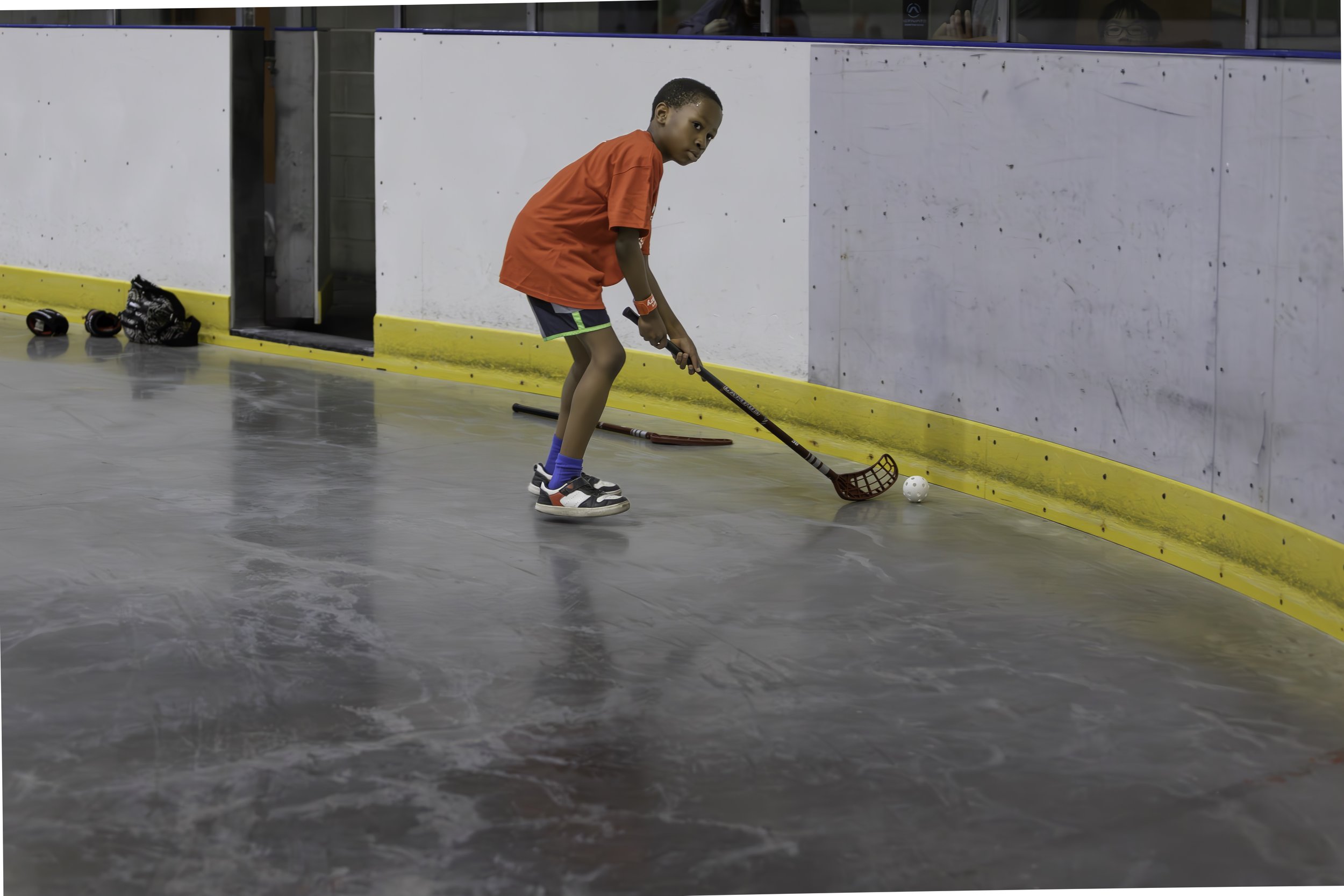
Floorball
Floorball is a faster variation of floor hockey played between 2 teams of 5 players, plus goalkeepers, on a rink that can vary from 59 – 66 ft to 118 – 131 ft long in an indoor venue. Each period lasts 20 minutes with 3 total periods per game. Teams score points by sending the ball into the opposing team’s goal.
The first variations of floorball started as a recreational sport in Canada and the United States in the early 20th century. Floorball was formally organized as a sport in Sweden during the 1970s.
You do not need to have any special skills to get started with floorball. It’s easy to learn and a fast-paced game that involves lots of running that will be sure to get your heart pumping.
Wheelchair floorball is a version of the sport played by participants with physical disabilities and plays by the exact same rules and with the same equipment as regular floorball.
Similar Sports: Floor Hockey, Ice Hockey
-
Increased cardiovascular fitness.
Improved coordination.
Accessible and adaptable.
-
You’ll need a floorball stick, a floor ball, T-shirt, shorts, and a pair of running shoes.
-
Common injuries in floorball usually occur in the legs, with sprained ankles being the most common. As with any sport, stretching and warming up is important before heading out to play to avoid injury. Be aware of your surroundings to avoid any injuries to you and other players.

Football
Football (American football) is a full-contact team sport played between 2 teams of 11 players each on a large field with goals on each end. Each team will traverse down the field with the oval-shaped football and attempt to score as many points as possible by taking the football into the opposing team’s end zone, or by throwing/kicking the football through the goal posts.
The origin of football has roots in both soccer and rugby. The first football game was played between Princeton and Rutgers’ college teams in 1869, before the rules of modern football started to become formalized in 1880.
No special skills are required to play football. It is a fast-paced sport that makes use of the entire body for running, throwing, carrying, kicking the football, and tackling. You’ll be able to develop and/or strengthen your endurance and stamina levels the more you play. Safety equipment, such as helmets and knee pads, are required before stepping onto the field.
Adaptive versions of football, such as wheelchair football, have become more prevalent in the United States. Although there are yet to be adaptive football programs in Calgary, you can contact your football league to see if they can provide any accommodation for you.
-
Increased endurance and cardiovascular health.
Improved agility.
Learn to work together in a team.
-
You’ll need a helmet, shoulder pads, gloves, football shoes, thigh and knee pads, mouthguard, and compressions shorts. Safety is of utmost importance for football players, so ensure that all your gear fits properly before playing.
-
Strains, sprains, and bruises are the most common injuries for football players. More serious injuries include dislocations, fractures and concussions. For full-contact sports like football, it is important to ensure that all your safety equipment is on properly before playing. Don’t forget to warm up and stretch thoroughly before getting on the field to avoid any injury.
Similar Sports: Flag Football, Rugby, Soccer
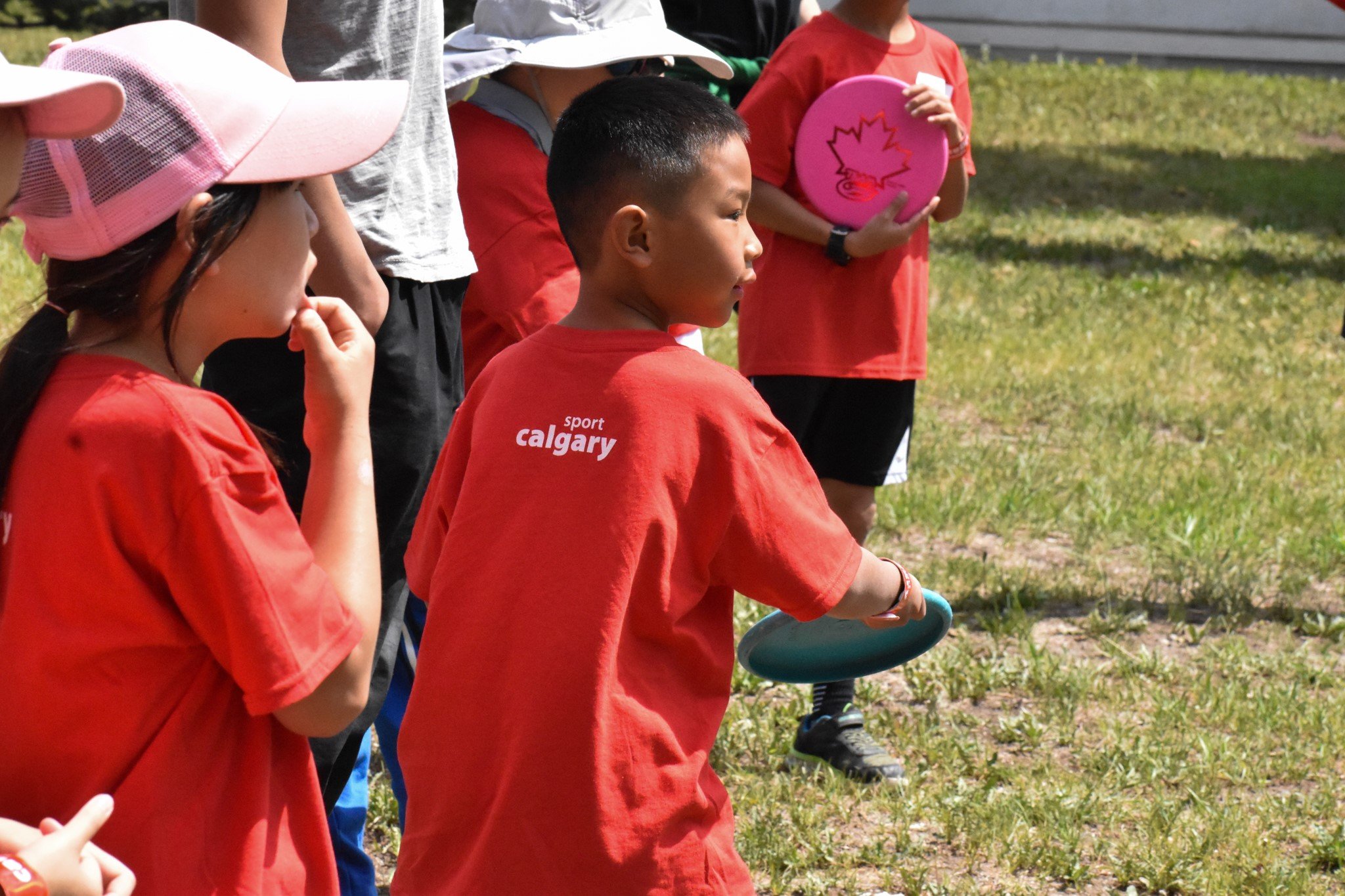
Frisbee
A frisbee, or flying disc, is a disc made of primarily plastic, 8 to 10 inches (20 to 25 cm) long in diameter with a lip for handling. It is used by aiming and tossing the frisbee at a target or to another person. When tossed, the frisbee will be spin and glide through the air towards the intended target. It is used in a variety of disc sports such as Ultimate and Disc Golf.
Frisbee was invented by a husband and wife in the United States while they were tossing a popcorn can lid back and forth between them after a Thanksgiving dinner in 1937.
Apart from a frisbee, no special skills or equipment are required to play! Just get a friend, or a group, and you can play casually between yourselves, or you can play it competitively in teams. Competitive frisbee games such as Ultimate, are played in teams and is a no-contact sport. The goal of Ultimate is to toss the frisbee between team members to make it to the opposing team’s end zone.
Competitive frisbee games have been adapted to make them more accessible to individuals with cognitive and/or physical disabilities, such Wheelchair Ultimate and Wheelchair Disc Golf.
-
Increase in agility
Increase in endurance
Full body workout
A great way to meet new friends!
-
If you’re playing casually, then a frisbee is all you need! But if you want to play competitively, then you may want to add cleats and gloves to your list.
-
If you want to play frisbee competitively, you’ll need to watch out for injuries to the knees, ankles and shoulders. Remember to stretch and warm up before playing to avoid injuring yourself!

Futsal
Futsal is a sport similar to soccer, but rather than playing on a grass field, it is played on an indoor hard court that varies from 82 X 53 ft to 125 x 138 ft, between two teams of five with a smaller and denser ball than your average soccer ball. Futsal puts more emphasis on technique and control of the ball when playing, making for a fun and dynamic game.
Futsal was originally developed in 1930 in Uruguay with the purpose of creating a version of soccer that could be played indoors on a basketball court. The sport spread quickly around South America and around the world, eventually leading to the formation of an international organization as well as being recognized by FIFA.
No prior specialized skills are required to get started with playing futsal. The game requires endurance and stamina, as you will be running around frequently. Make sure to stretch and warm up before you hit the field.
Please contact your futsal provider to ask if they can provide/have any accommodation in place for participants with physical and/or cognitive disabilities.
-
Increased agility and strength.
Increased endurance and stamina.
Learn and build upon teamwork skills.
-
Comfortable clothing (preferably shorts and a T-shirt), a pair of running shoes, a futsal ball, and protective gear, like shin guards, if you’d like
-
The most common futsal injuries usually occur in the legs with sprains, strains and bruising. There is a chance for more serious injuries such as concussions if players are not careful enough. Remember to stretch and warm up before playing to lower your chance of getting injured.

Gaelic Football
Gaelic football originates from Ireland and it remains the country’s national sport. The ball is a little smaller than a soccer ball and can be moved across the field with a kick or a hand-pass. The ball can also be caught and held by a player for four steps. To score points players can kick or throw the ball into the opposing team’s net or over the crossbar.
The earliest versions of the sport appeared in historical records in 1670, where catching and kicking the ball were permitted within the rules of the game. The modern version of Gaelic Football became codified in 1887.
Prior experience is not needed, but you should be prepared for a challenge. The sport requires lots of endurance and stamina, as you will be running around frequently. Make sure to stretch and warm up before you hit the field.
Although there is yet to be an adaptive Gaelic Football program for individuals with physical/cognitive disabilities, please contact your local Gaelic Football club to see if they are able to provide any accommodation.
-
Increased aerobic fitness
Improves teamwork skills
-
Little equipment is required to play only the nets and the ball are essential and usually clubs will supply these. Players may also need cleats if they are playing more competitively.
-
Being a contact sport the risk for injury during play is increased. Some of the more common injuries associated with playing Gaelic football are concussions and dislocated shoulders.

Gliding
Gliding is an air sport where pilots use natural air currents to fly an engineless aircraft, called gliders, or sailplanes, through the skies. Without the noise of an engine, you’ll be sure to enjoy a tranquil flight with spectacular views.
The origins of gliding began in the mid-1800s with the invention of gliders that were only able to fly short distances. Gliding as a sport developed in Germany after the First World War, with gliders becoming more sophisticated and eventually being able to fly long distances within the decade.
No special skills are needed to learn how to glide. As a beginner, you’ll learn all about the aircrafts, and the different theories and techniques for gliding. Once you start flying the glider, you’ll be flying near the airfield to get comfortable before gradually flying further as you gain confidence and develop your skills.
Modifications made to hand controls and the cockpit allow for individuals with physical disabilities to be able to participate in gliding. Contact your gliding club to ask if they can provide any accommodation for you!
-
Improved focus and concentration.
Take in breathtaking views.
Gain a sense of peace and tranquility as you glide through the skies.
-
Your gliding club will provide gliders for you to fly. Wear comfortable clothing, bring a hat, sunscreen and a pair of sunglasses and dress appropriately for the weather.
-
Gliding up in the sky can present certain risks such as crashes and collisions. To avoid and lower the chances of these risks occurring, pilots must ensure that they are well-informed of safety procedures and practices and must be aware of their surroundings while they’re flying. Ensure that safety equipment is in place and functioning properly before flying.
Similar Sports: Sailing

Golf
Golf is a ball sport that uses different clubs to hit a small golf ball into holes in a series of courses. Courses usually have 9 or 18 holes that each have various terrains and layouts to play on. The goal of the game is to get the golf ball into the hole in each course in the least number of strokes.
The first written records of the modern game of golf are believed to have come from Scotland in the 15th century. However, there is evidence of older variations of the game that have roots in various cultures, such as in Ancient Rome and Ancient China.
There are no special skills required to start learning how to play golf. It is a sport that requires movement of the entire body, especially in the arms, to hit the ball with a club. Golf is also a relatively low impact sport, with a low risk of serious injury to the body. However, it’s always important to warm up and stretch before hitting the golf course.
Adjustments made to golfing equipment such as adaptive golf clubs and grip devices make it easier for those with physical and/or cognitive disabilities to play. The City of Calgary offers Adaptive Family Golf Nights for those experiencing disabilities of any type to try out a round of golf on the McCall Lake Golf Course.
-
Improved cardiovascular health.
Low impact.
Socialize with other golfers!
-
You’ll need a set of golf clubs, and a golf ball. Dress comfortably and appropriately for the weather.
-
Golfing overuse injuries occur most commonly in the wrists, elbows, shoulders, and back. It is important to remember to warm up and stretch thoroughly before playing. Be aware of your surroundings and prepare and dress accordingly for the weather.

Gymnastics
Gymnastics is a popular sport that consists of exercises that require balance, flexibility, endurance, agility and coordination. There are several different types of gymnastic sports that include: vaults, uneven bars, balance beam and rhythmic gymnastics just to name a few!
Gymnastics originated in Ancient Greece and became formalized to train men in warfare once the Romans invaded. Gymnastic sports experienced a revival in 19th century France, where it then spread to the United States and eventually became a part of the modern Olympic games in 1896.
Gymnastics is a sport that requires strenuous movement and strength of the entire body. It’s a sport that requires lots of focus, dedication and practice to master, so it’s important to be patient with yourself and remember to rest often to avoid sustaining any serious injuries.
Adaptive gymnastics allows for individuals with physical and/or cognitive disabilities to participate in the sport. Adaptive classes will help develop motor skills, coordination, balance as well as build more confidence. Smaller class sizes allow coaches to give more personalized lessons that will meet the needs of participants. Contact your gymnastics club to see if they can provide accommodation for you!
-
Improves balance and coordination.
Increases strength.
Builds confidence.
-
No special equipment is needed. Come to your class/gym in comfortable fitted clothing, ensuring that nothing dangles and could potentially get caught in clothing or equipment.
-
Common gymnastics injuries include strains, sprains and bruises. More serious ones include fractures, dislocations and concussions. It is important to remember to stretch and warm up thoroughly before practicing. Ensure that you’re aware of your surroundings and of other participants around you and remember to rest when needed to prevent overuse injuries.
Similar Sports: Rhythmic Gymnastics, Parkour

Handball
Handball is a team sport where two teams compete on a court of 40 x 20 metres to score goals against each other by tossing a ball into the goal of the opposing team. Teams consist of 7 (including the goalkeeper) players each, with each game consisting of 2 periods lasting 30 minutes each.
There are many early versions of the game that were played all around the world, such as in Greenland, Ancient Greece and medieval France. It wasn’t until the end of the 19th century that the modern version of handball was developed in northern Europe. The rules of the modern game were set in Berlin in 1917, and the sport became a part of the 1936 Summer Olympics.
Handball is a physically demanding and extremely fast-paced sport. You do not need to have any prior knowledge of the sport to play. Be ready to run, jump and throw the ball between team members, so make sure to stretch and warm up before playing!
An accessible version of handball has been developed and can be played in wheelchairs for players with physical disabilities. Please contact your handball club to see if they can offer any accommodation for you!
-
Improves agility and hand-eye coordination.
Gives you a full body workout.
Increases cardiovascular endurance.
-
To play handball, you’ll need a ball, or handball, gloves, comfortable running shoes, and a goal.
-
Injuries to the ankles, knees, thighs, shoulders, and fingers and muscle strain are common injuries. As with any sport, it’s important to stretch and warm up before you play. Be aware of your surroundings to avoid injuries to you and your teammates.
Similar Sports: Soccer, Water Polo

Hiking
Hiking is a fun and enjoyable way to exercise while enjoying nature year-round. Contrary to popular belief, hiking doesn’t always have to involve climbing up mountains. There are many hiking trails and boardwalks choices with little to no elevation gain, making it easily accessible to all. With an endless selection of trails here in Calgary and in the nearby Rocky Mountains, there’s no shortage of beautiful scenery and exciting adventures for everyone regardless of skill level!
While walking long distances for religious and spiritual purposes dates far back into history, walking for pleasure emerged out of Britain in the 18th century. Mountaineering clubs soon appeared in the following centuries in both Europe and North America where the idea of hiking became increasingly popular.
Here in Calgary, we’re lucky to have 1000 km of regional pathways and 96 km of trails that we can use for both hiking and biking! There’s an endless number of choices that suit all skill levels and accessibility needs. You can find a map and information on walking and hiking trails online.
If you’re heading into the mountains, you’ll need to prepare accordingly and pack proper equipment. Don’t forget to bring a water bottle and snacks, and dress appropriately for the weather before you start your hike.
Hiking is an outdoor activity that anyone can enjoy. There is a great selection of trails and boardwalks that are paved with little to no elevation gain make hiking easily accessible regardless of physical and/or mental disability. Not only does hiking help improve your physical health, but it can also boost mental well-being.
-
Builds stronger muscles and bones.
Improves cardiovascular health.
Improves mental wellbeing.
-
If you’re heading out to one of the hundreds of walking trails or parks in Calgary, you can dress comfortably (and according to the weather) along with a pair of athletic shoes. You can bring a water bottle and snacks if you’d like.
If you’re heading into the mountains, you’ll need to bring a backpack to carry water, snacks, a first aid kit, bear spray, an extra sweater and/or jacket, sunscreen, mosquito repellent, a hat, and wear a pair of sturdy athletic shoes, or hiking shoes/boots.
-
Hiking may present several environmental risks such as bad weather, uneven terrain, and even wildlife encounters. It is important that you prepare accordingly with a first aid kit, water bottle, snacks, extra clothing, and make sure to check weather conditions before heading out.
Similar Sports: Orienteering

Historical European Martial Arts
Historical European Martial Arts (HEMA) are historical fighting styles that come from Europe. They often involve the use of weapons such as longswords, daggers, spears, sabres, and rapiers while wearing protective gear.
These fighting techniques originate from combat styles from the 14th to 19th centuries and cover techniques originating from historical manuscripts from all over the European continent.
No special skills are required to start training with HEMA, as you’ll learn all the techniques during your lessons. Be aware that some of the equipment and protective gear you’ll be using may be on the heavier side. You’ll be taught how to use equipment and proper safety precautions before you start sparring.
Please contact your sports provider to see if they have any accommodation for individuals with physical and/or cognitive disabilities. For the safety of other participants in classes, the minimum age for joining beginner classes may be older.
-
Increased muscle strength.
Increased endurance and stamina.
A fun and exciting way to get fit.
-
No special equipment is required. Equipment will be provided to you for classes. Be sure to come to classes in comfortable clothes and athletic footwear.
-
Due to the use of equipment, participants need to be more careful and mindful of how they’re handling them. You may get bruises, strains, sprains and have some soreness while participating, so be sure to stretch and warm up properly before starting.

Hockey
Hockey, but more specifically ice hockey, is a team sport played on an ice rink with hockey sticks and a small rubber disk called a puck. The goal of hockey is to score the puck into the opposing team’s goal. There are several variations such as ball hockey, field hockey and para ice hockey.
The game of ice hockey that is popular in Canada and the United States first began as field hockey in Britain during the 18th and 19th centuries where it was played on a large field rather than a skating rink.
Players should first learn how to skate before learning how to play hockey. Ice hockey is also a highly physical and fast-paced sport, and it is important to make sure that you’re properly stretched and warmed up before hitting the ice.
Para ice hockey is a variation of the game adapted to help players with a physical disability in the lower part of their bodies. Players use sledges, a sort of sled with two long strips of metal, that allow them to move around on the ice, and two sticks with one end dedicated for pushing and the other end dedicated for maneuvering the puck.
-
Improved hand-eye coordination.
Improved balance.
Increased muscle strength.
-
Hockey players will need a pair of skates, a hockey stick and protective equipment such as helmets, neck guards, gloves, shoulders, elbow, knee and shin pads and hockey pants.
-
Ice hockey is a sport that has large potential for bodily injury. Each league has regulations in place to reduce injuries and ensure that each game is played as safely as possible. Remember to wear all your protective gear correctly, stretch, and warm up before you play.

Horseshoes
Horseshoes is a game that involves using horseshoes and stakes driven into a lawn or sandbox area. Played between 2 people or teams, the goal of the game is to throw the horseshoes at the stakes in the ground to try and hook the horseshoes onto the stakes.
The origins of the game of horseshoes may have come from the game of quoits in Roman-occupied Britain during the 1st to 5th century. The game arrived in North America from English colonialists, and the first horseshoe association was established in 1926.
No prior skills are needed to play horseshoes. It is a low-impact sport that requires being able to toss and lean. If you play with weighted horseshoes, ensure that you’re comfortable with tossing them before playing to avoid injury.
Adjusting techniques and equipment can make it easier for players with physical and/or cognitive disabilities to play. For example, using lighter horseshoes, encouraging the use of a two-handed toss, and having equipment in a bright colour for easier visibility can make the game more accessible for all players.
Similar Sports: Cornhole, Bowling, Lawn Bowling
-
Low impact.
Improve and maintain mobility and flexibility.
Great source of light cardio.
-
You’ll need a horseshoe stake and up to 4 horseshoes per player. If playing indoors, dress comfortably and wear closed toed shoes. If playing outside, dress appropriately for the weather and bring any additional items such as sunscreen, sunglasses, a water bottle, and snacks.
-
The most common horseshoe injuries occur in the wrist, mostly from overuse. More serious injuries include concussions, and cuts when playing with weighted metal horseshoes. Ensure that you stretch and warm up thoroughly before playing and rest if you start feeling tired. Be aware of your surroundings while playing, especially with other players. Wait until everyone has finished tossing their horseshoes before retrieving them.

Hurling
Hurling is a minimal-contact Gaelic sport played on a large grass field 140 x 84 yards long between 2 teams with 15 players each. Players use a wooden stick, called a hurley, to hit a small ball, called a silotar, through a goalpost guarded by a goalkeeper.
Hurling has ancient origins and has been a distinctly Irish sport for at least 3000 years. The first recorded history of the sport dates to the 5th century. Modern hurling was established in the late-1800s in Dublin.
No special skills are required to play hurling. This is a sport that requires lots of stamina and endurance, which you can build up with practice.
Wheelchair hurling is an emerging adapted version of the sport that makes modifications and adjustments to the rules and field to make the game more accessible to participants with physical disabilities. Although it has yet to make an appearance in Calgary, please contact your hurling provider to see if they can make any accommodations.
-
Increased endurance and stamina
Improved hand-eye coordination.
Teamwork building.
-
You’ll need a hurley and a silotar, a helmet, comfortable clothes (preferably shorts and a t-shirt) and a pair of good athletic shoes.
-
Although contact is limited, there is still risk for injuries, especially in the hamstrings with strains and pulls, and fractured fingers. Remember to be aware of your surroundings and other players, and stretch and warm up before playing.

Inline Hockey
Inline hockey is a type of hockey that is played on a smooth hard surface rather than ice. Players use inline skates, a type of roller skate with the wheels arranged in a single line, to move around the rink as they try to score points in the opposing team’s goal with a plastic puck and hockey sticks. Each team has 7 players (including the goalkeeper) playing at a time.
The history of inline hockey originates from newsreel footage from Austria in 1938. In 1940, inline hockey rules were drafted up in the United States, but interest in the sport didn’t increase until after World War II in the late 1940s into the 1950s.
To play inline hockey, you would need a good sense of balance and feel comfortable using inline skates. The game can be as fast paced as ice hockey, so you would need to be able to stop, sprint and change directions at a moment’s notice. If you know how to skate, then picking up inline skating will be a breeze! Don’t feel discouraged if you aren’t familiar with inline skating; you can learn how to do it in a relatively short amount of time while working on your balancing skills.
Although an adaptive version of inline hockey has yet to be developed for those with physical and/or cognitive disabilities, please contact your local inline skating/inline hockey provider to ask if they are able to provide any accommodations for you.
-
Improved hand-eye coordination.
Improved balance.
Increased muscle strength.
-
You need a pair of inline skates, a hockey stick, a helmet with a face shield, and elbow and shin pads. If you want to play on a league, you may want to purchase inline pants, and shoulder pads.
-
The most common inline hockey injury are ankle sprains. These can result from falls, fatigue and collision with other players. Remember to wear all your protective gear correctly, but most importantly, remember to stretch and warm up thoroughly before you play.
Similar Sports: Inline Skating, Hockey, Floorball
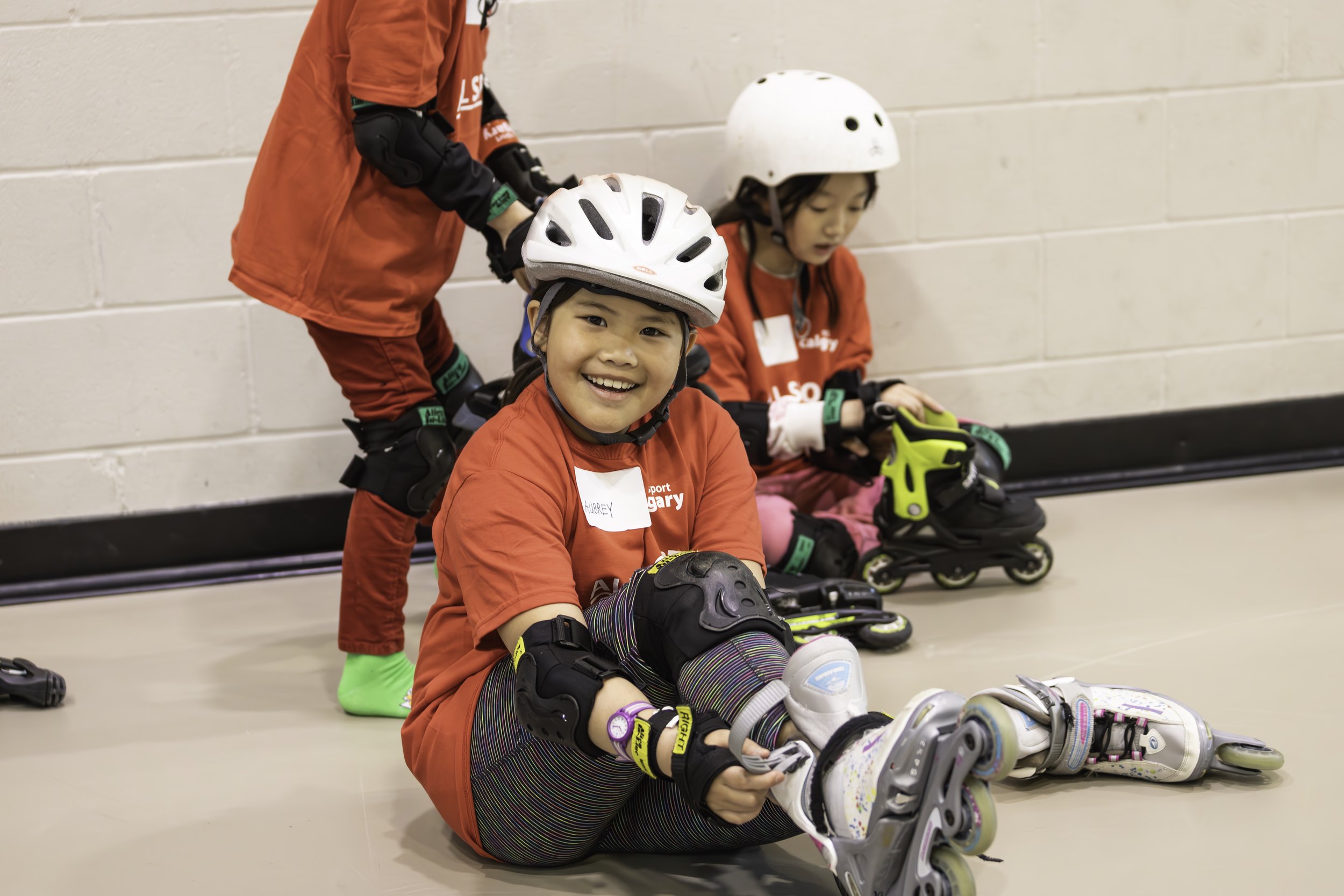
In-Line Skating
Inline skating, or sometimes known as rollerblading, is a sport that uses inline skates, which are boots that have 3 to 5 wheels on the underside, allowing for easier movement, speed and maneuverability. There are several different disciplines of inline skating such as artistic skating, aggressive skating and freestyle skating.
Inline skates were first developed as substitutes for ice skates in the United States in the 1980s for hockey players who wanted to continue to train during the summer months. It became a hit nationwide in the following decades, with inline skating being included in the X Games during the 1990s and early 2000s.
There are no special skills required to learn how to inline skate. You’ll be able to practice and/or develop your balancing skills the more you skate. If you know how to ice skate, then inline skating is the perfect sport for you!
Although there has yet to be an adaptive version of inline skating programs, please contact your inline skating provider to see if they can offer any accommodations for you!
-
Improves balance.
Improves lower body strength.
Improves cardiovascular health.
-
No special equipment is needed for inline skating. Wear comfortable clothes and bring protective gear such as a helmet, wrist guards and elbow and knee pads. You can rent inline skates at roller rinks or at specialized inline skate shops.
-
The most common injuries for inline skaters are wrist and hand injuries. More serious injuries include concussions. Before you go skating, make sure that all your protective gear is on and secured properly. Don’t forget to stretch and warm up before hitting the roller rink!
Similar Sports: Roller Derby, Inline Hockey

Jiu-Jitsu
Jiu-jitsu is a close combat Japanese martial art that involves the use of a variety of different techniques including grappling, pins, throws and striking for self-defense. Jiu-jitsu has been used as the basis for several other types of martial arts such as: judo, aikido, Brazilian jiu-jitsu and MMA.
Jiu-jitsu first appeared in Japanese written records during the 700’s CE, where it was used for close combat against armed soldiers on the battlefields. The sport flourished after the end of World War II, where it spread from Japan and evolved into different forms of martial arts around the world.
No special skills are required to start learning jiu-jitsu. However, it is a fast-paced sport that will test your reaction time and hand-eye coordination skills. It often involves flipping, kicking and immobilizing your opponent with pins and locks, which you will learn during classes.
Jiu-jitsu is a highly adaptable sport. Many practitioners who have mastered jiu-jitsu have a wide range of physical and/or cognitive disabilities, but that never stopped them from pursuing the sport! Contact your jiu-jitsu club to see if they can offer any accommodation for you.
-
Increased strength and flexibility.
Improved balance and coordination.
Increased mobility.
-
No special equipment is required for learning jiu-jitsu. Come to classes in comfortable clothing, such as shorts and a T-shirt. A uniform may not be necessary at all; contact your jiu-jitsu club to see if you require any additional equipment.
-
Common jiu-jitsu injuries include strains and sprains to various parts of the body such as the neck, hands, knees, and shoulders. Remember to warm up and stretch thoroughly to prevent overuse injuries before sparring. Be aware of your surroundings to avoid injuring yourself and others.

Judo
Judo is a Japanese martial art characterized by it’s grappling and wrestling techniques. The objective of judo in competitive sports is to be able to throw an opponent to the ground, pin them down, then force them into submission via joint lock or choke.
The sport was created in 1882 in Japan, taking inspiration from other Japanese martial arts such as Jiu Jitsu. The first standardized rules for judo were set in 1899, with the intention of using these rules for future competitions. Judo formally became a part of the 1964 Summer Olympics in Tokyo.
No special skills are required for judo. The sport makes use of the entire body to wrestle and grapple opponents, so you’ll be able to build up strength the more you practice and learn different techniques.
Please contact your judo provider to see if they can provide any accommodation for individuals with physical and/or cognitive disabilities.
-
Improved flexibility.
Improved cardiovascular health.
Improved confidence and self-esteem.
-
No specialized equipment is required for practicing judo. Some providers may require you to purchase a judo uniform before attending your first class, while some may not. Please check with your judo provider to see if you require any mandatory uniform.
-
The most common judo injuries include neck and back pain, and sprains. More serious injuries may include fractures, dislocations, and concussions. Please remember to stretch and warm up thoroughly before practicing. Don’t forget to follow safety precautions to avoid any serious injury to yourself and your opponents.
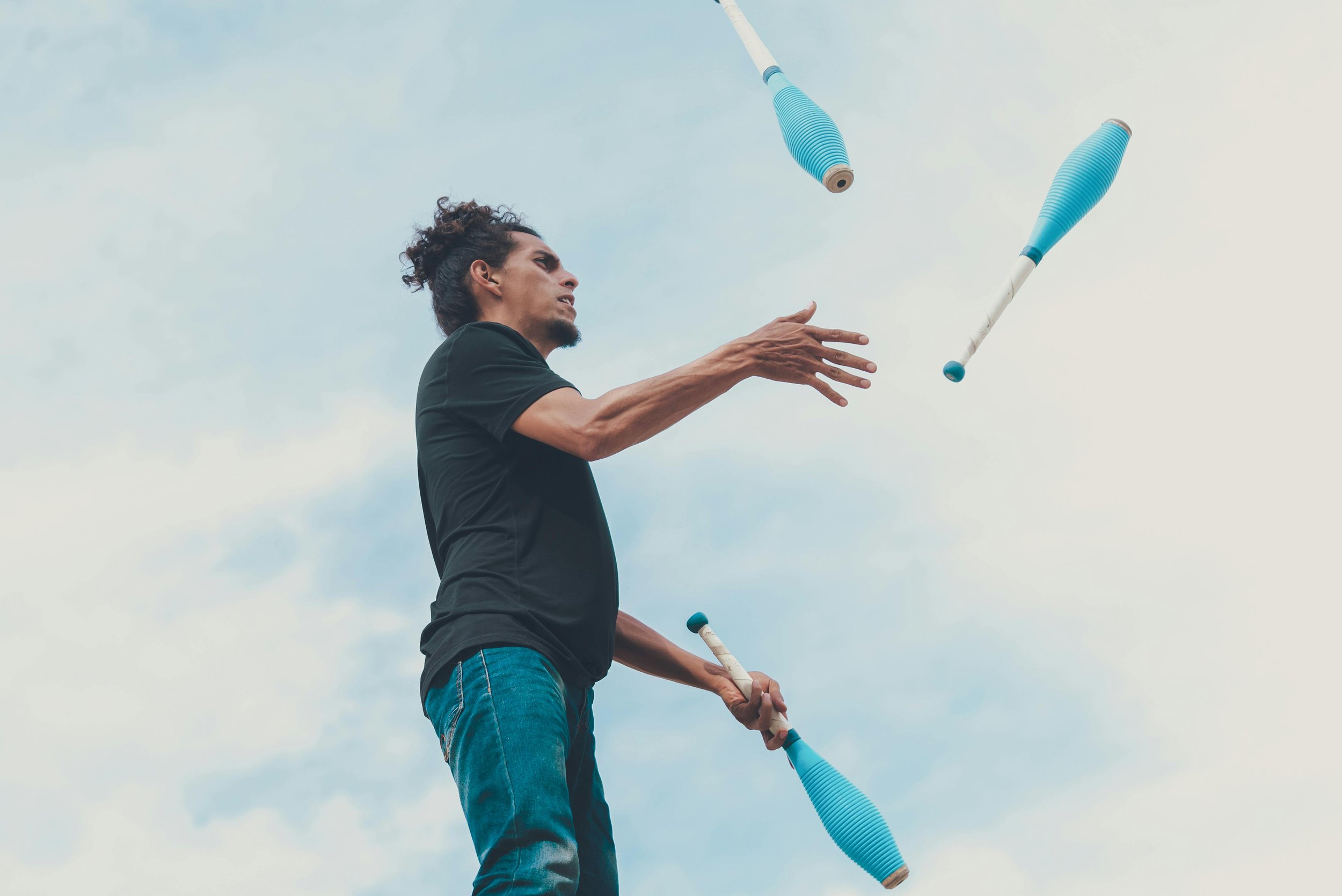
Juggling
Juggling is a sport and skill where jugglers will toss objects, such as balls, and clubs, in the air, catching them in their hands in an alternating order. It’s common to see people juggle with 3 objects, but many skilled jugglers can handle more than 3 and perform acrobatic performances while keeping the objects in motion.
The earliest record of juggling dates to Ancient Egyptian wall paintings found in a tomb, however, juggling has been present in several ancient cultures from around the world including in Norse and Polynesian societies.
No special skills are required to start learning juggling. You’ll be able to improve your hand-eye coordination skills, and concentration. You need to have mobility in your hands and arms and be comfortable and able to tilt your head upwards for extended periods of time. Start by tossing a ball or small bean bag from one hand to the other to get comfortable with the movement before you add more objects.
Juggling can be adapted to make the sport more accessible for those with physical and/or cognitive disabilities. Adjustments to techniques, number of objects, and even to modes of play can make juggling more accessible.
-
Improved hand-eye coordination.
Increased focus and concentration.
Builds self-confidence.
-
Typically, you can start juggling by using 3 small balls that are easy to toss and catch in your hands. You may also use small bean bags, as they may be easier to handle than balls.
-
The most common juggling injuries are overuse injuries to the arms, and hands due to the repetitive nature of the sport. Bruises are another potential injury as jugglers may get hit by failing to catch objects.

Karate
Karate is a popular Japanese martial art that uses striking, punches, kicks, and blocking techniques. Karate competitors compete individually or against each other on a matted area 27 x 11 ft wide and perform techniques and forms. Competitors score points based on how well they execute techniques.
Karate is thought to have originated from Chinese martial arts that was brought over to what is now Okinawa in Japan. There, it was developed and introduced to the Japanese mainland where it exploded in popularity.
No prior skills are needed before starting karate. You’ll learn all the basics skills and techniques through your classes and gradually work your way up through the different skill levels, earning belts as you do so.
Adjustments to classes and techniques can help make karate a more adaptable sport for those with physical and/or cognitive disabilities. Changes to class sizes, techniques and personalized training can make karate less intimidating and more enjoyable for all.
-
Increased muscle strength
Increased flexibility.
Improved self-confidence.
-
No special equipment is needed. Come to classes in comfortable clothes, but certain schools may require you to purchase a karate uniform.
-
Bruises, strains, and sprains are common injuries when practicing karate. More serious injuries such as dislocations and fractures are also possible. Be aware of your surroundings and of other people when you spar and most importantly, don’t forget to warm up and stretch before engaging in any physical activity.
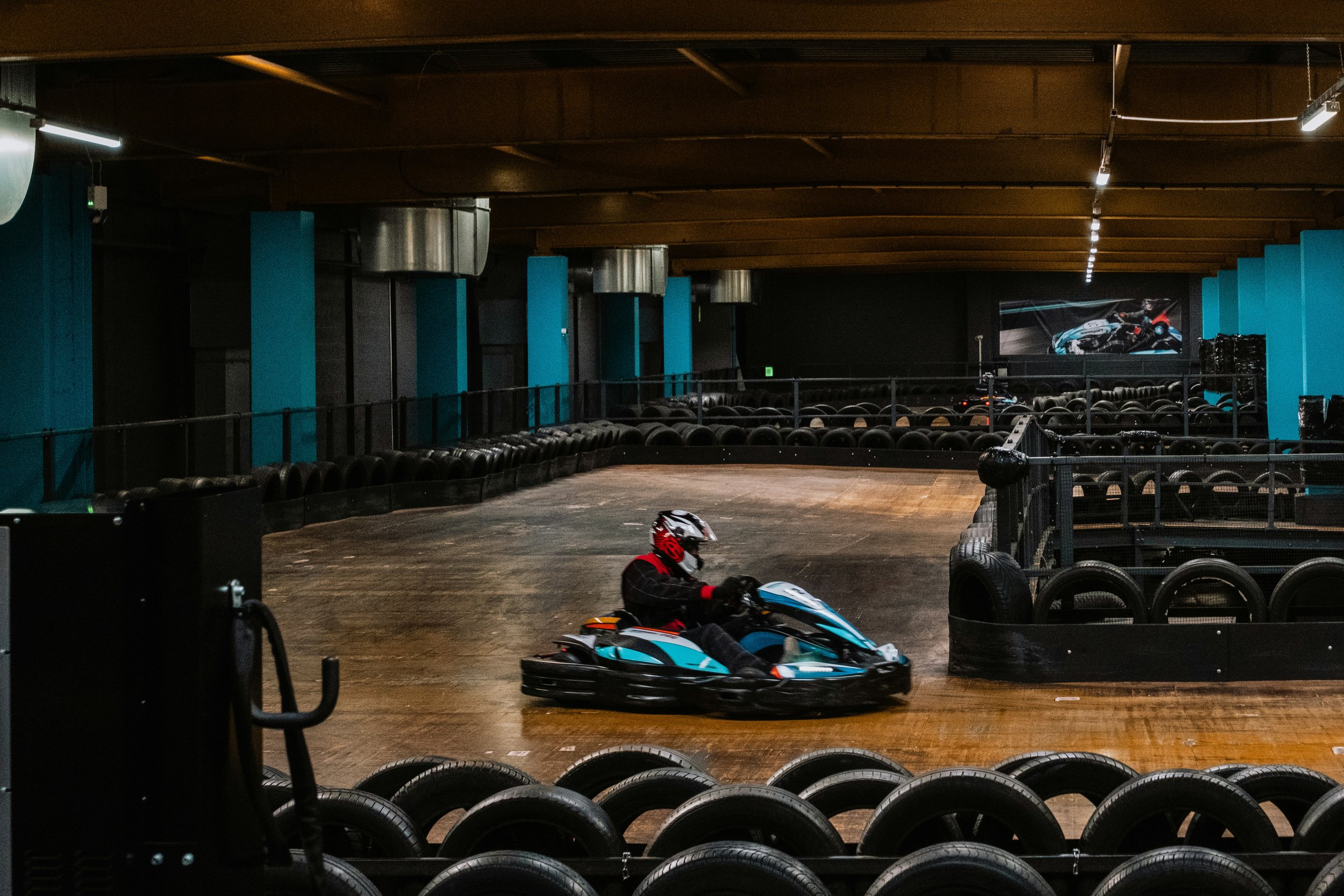
Karting
Karting is a motorsport that involves racing a 4-wheeled vehicle, called a go-kart, around a small circuit. The sport is done both recreationally and competitively. In professional settings, go-karts can reach up to speeds of 160km/hr, while go-karts for the public go much slower to ensure the safety of the driver.
The first go-kart was built in 1956 in California, where karting became instantly popular, spreading overseas to Europe, where it still has a large following to this day.
No special skills are required to start karting. There are several facilities around the city that will teach beginners how to operate the go-karts and ensure that drivers follow safety procedures.
Specialized go-karts allow for individuals with physical disabilities to experience the thrill of karting. Adjustments such as hand controls replacing gas and brake pedals make karting accessible. Please contact your preferred karting provider to ask if they offer any accommodations for you.
-
Increases confidence.
Improves reflexes.
A safer and fun way to experience racing!
-
No special equipment is needed. You’ll be provided with protective gear and the go-kart at karting facilities.
-
Common karting injuries include bruises, sprains and whiplash. Ensure that you are aware of your surroundings when karting and follow all safety procedures as you’re karting to avoid injury to yourself and/or other participants.
Similar Sports: Biking/Cycling, Track Cycling, BMX

Kayaking
A kayak is a type of boat like a canoe and uses a double-bladed paddle to propel the rider around in the water. Kayaking can be used for leisure activities or be used in adventurous sport for thrill seekers. The most popular way to use kayaks is for whitewater kayaking, which involves paddling down rivers and creeks with varying degrees of difficulty.
Kayaks were created by the Inuit in the Arctic regions thousands of years ago. Traditionally, the kayak was made for hunting and fishing and was made from whale bones and animal skins.
No prior skills are needed to learn how to kayak. Many parks with bodies of water will have kayaks for rent. Choose a still body of water and stay close to shore. Wear clothes that you don’t mind getting wet and are appropriate for the weather.
Modifications made to kayaks and paddles, such as mount-supported paddles, allow for individuals with physical disabilities to participate in the sport. For individuals with a cognitive disability, please contact your kayak provider to see if they can arrange accommodation, such as private lessons.
Similar Sports: Canoeing, Paddleboarding, Sailing
-
Increased muscle strength in the arms, chest, and shoulders.
Increased cardiovascular fitness.
Can be a great way to relax or for adventuring.
-
Apart from your kayak and paddle, a life jacket is essential for your safety before getting into the water. For more adventurous kayaking trips, a helmet is essential. Make sure to bring an extra change of clothes, snacks, a water bottle and a first aid kit.
-
Kayaking is a water sport that may present several risks. Make sure your kayaks are in top condition and that you are wearing the proper protective equipment, such as a life vest and helmet, to avoid falling into the water. Keep an eye out for weather conditions and dress appropriately. You may experience sore arms and shoulders from paddling.
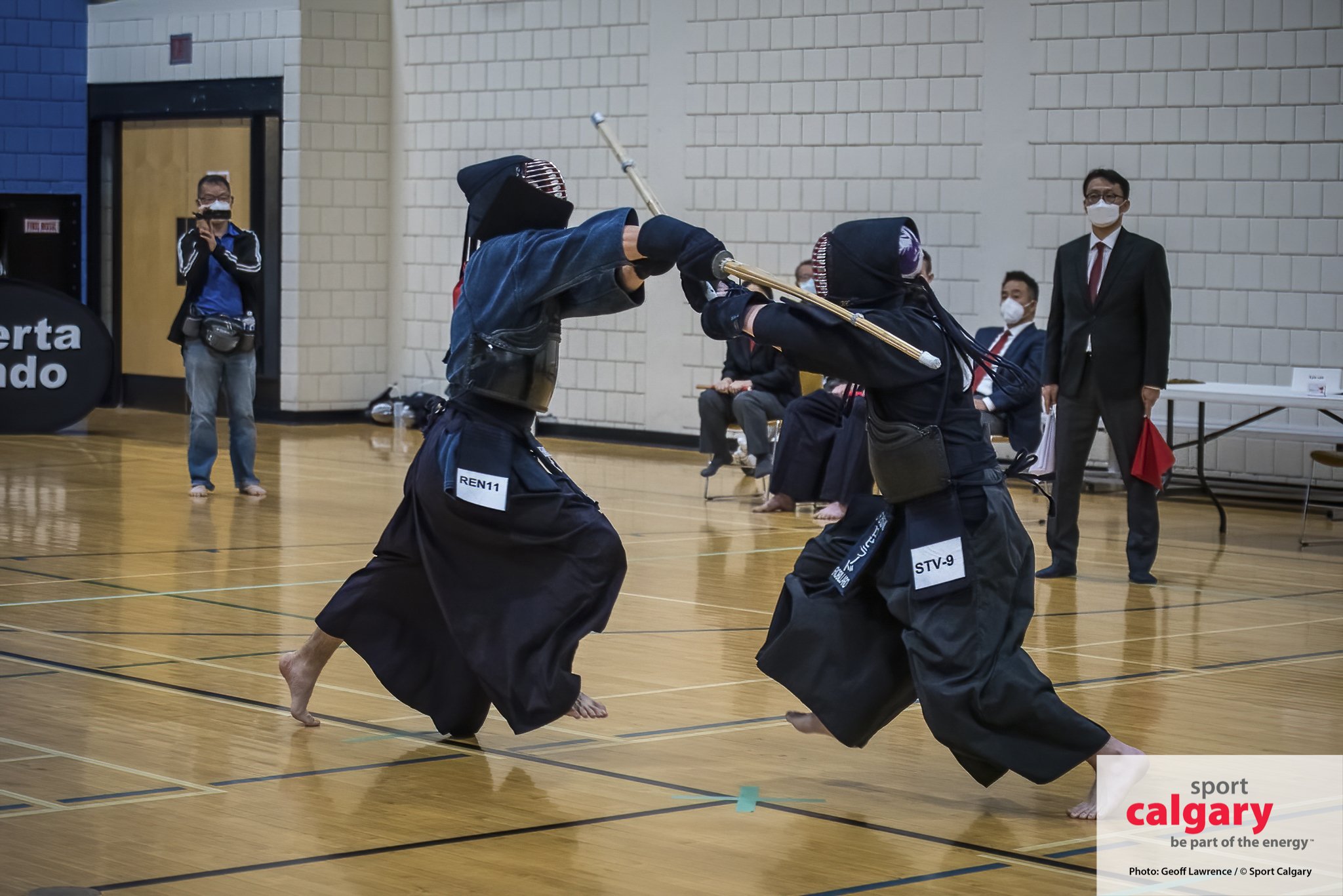
Kendo
Kendo is a Japanese martial art that involves using bamboo swords and protective armor. During competitions, participants face-off against each other and attempt to score the winning 3 points by landing hits on their opponent’s armor.
The sport evolved from an older form called kenjutsu, that was practiced by warriors. Kendo came into prominence in the 18th and 19th centuries with the introduction of iconic bamboo swords and protective armor. Shortly after World War II, several international kendo organizations were formed with the hopes of promoting kendo as an educational sport.
No special skills are required before learning Kendo. However, this is a sport that requires lots of patience and self-control as you learn basic forms and techniques, and rules and etiquette.
Please contact your kendo provider to see if they can provide accommodation for participants with any physical and/or cognitive disability.
-
Increase cardio and strength.
Increase confidence.
Improves posture.
-
For beginners, come to class in comfortable clothes. Equipment will be provided to you during classes. As you advance, and if you would like to get more serious about kendo, you may need to purchase your own equipment.
-
Bruises, sprains, and strains to the foot/ankle, wrist/hand and the elbows/forearms are all common injuries in Kendo. Be sure to warm up and stretch thoroughly before practicing.
Similar Sports: Fencing
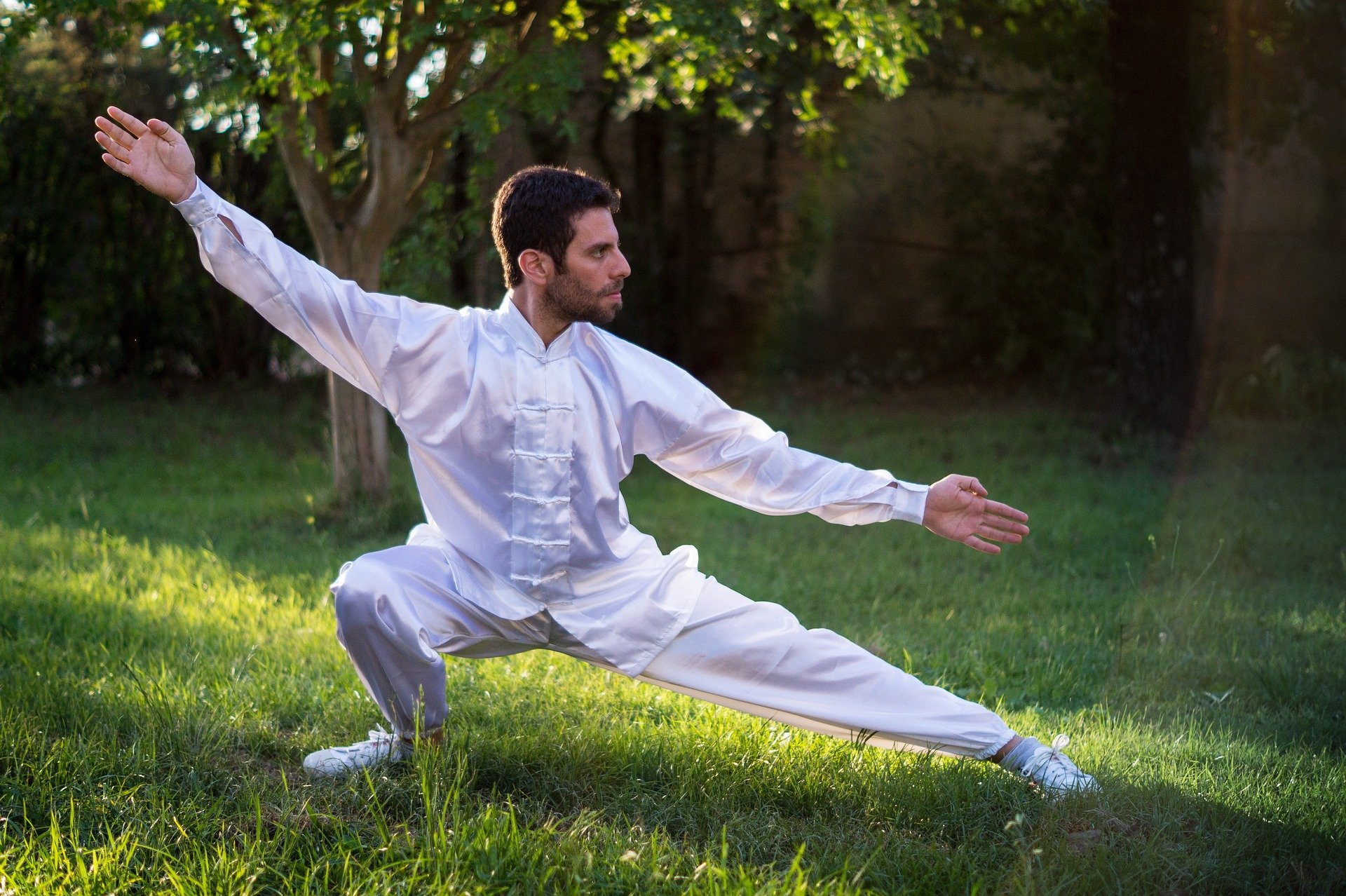
Kung Fu
Kung Fu consists of multiple Chinese martial art styles, including popular styles such as Tai Chi and Wushu. Characterized by punches and kicks, it can be learned as an exciting and energetic form of exercise. All forms of kung fu require focus, concentration, self-discipline and most importantly, lots of practice.
The first forms of Kung Fu originated in China, before its influences spread to other parts of Asia. These different styles developed over the centuries in China, and thanks to popular culture and media, has become a popular sport that is practiced all over the world.
Kung Fu is a sport that can be physically demanding. Forms and techniques require lots of practice and discipline to master. Flexibility is key, so make sure to stretch and warm up properly before practicing forms and stances to avoid injury.
Please contact your martial arts provider to see if they can provide any accommodation, such as smaller class sizes or private lessons, if you have any physical and/or cognitive disabilities
-
Increases balance and reflexes.
Increases stamina and endurance.
Increases confidence.
-
You can practice kung fu in comfortable clothes and sneakers. Some classes may use protective gear such as a mouth guard, or shin guards.
-
Kung Fu is a combat sport that presents risk for injury to various parts of the body. Minor bruises, sprains and some soreness are common after practice or competition, so remember to stretch and warm up thoroughly beforehand.
